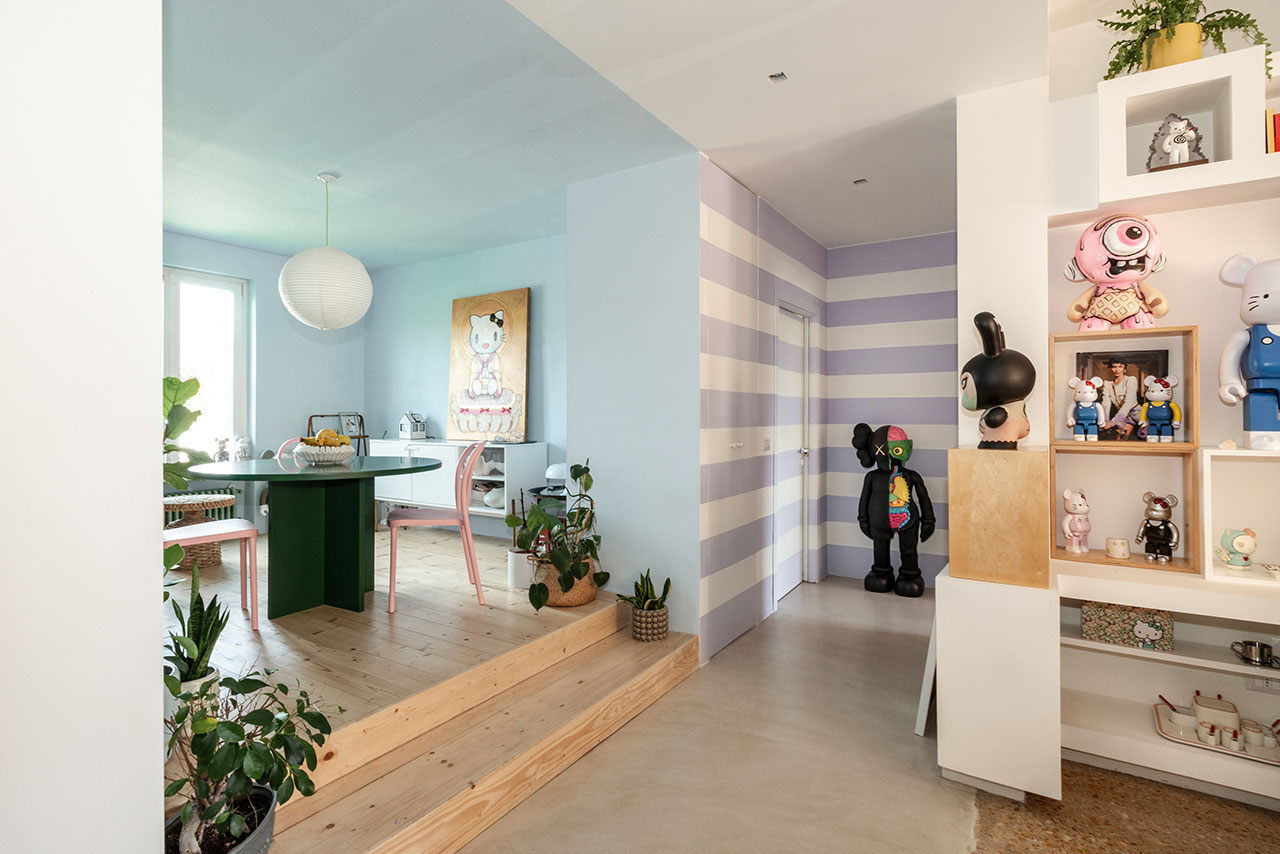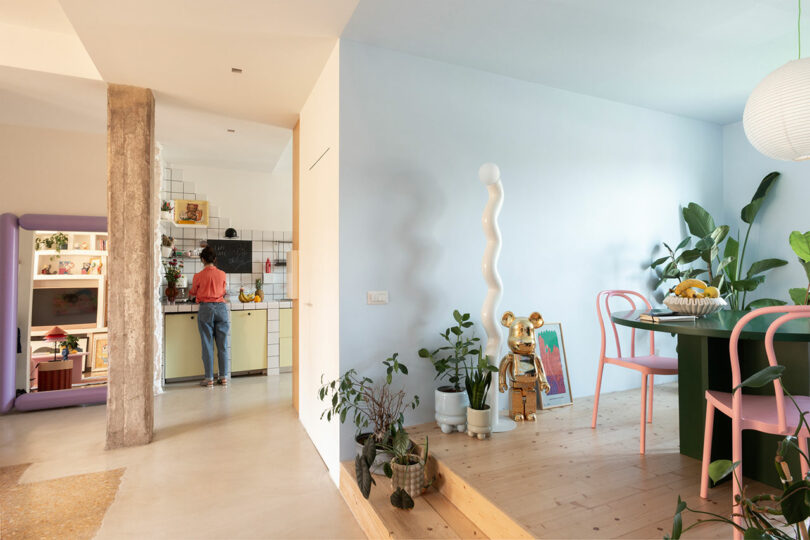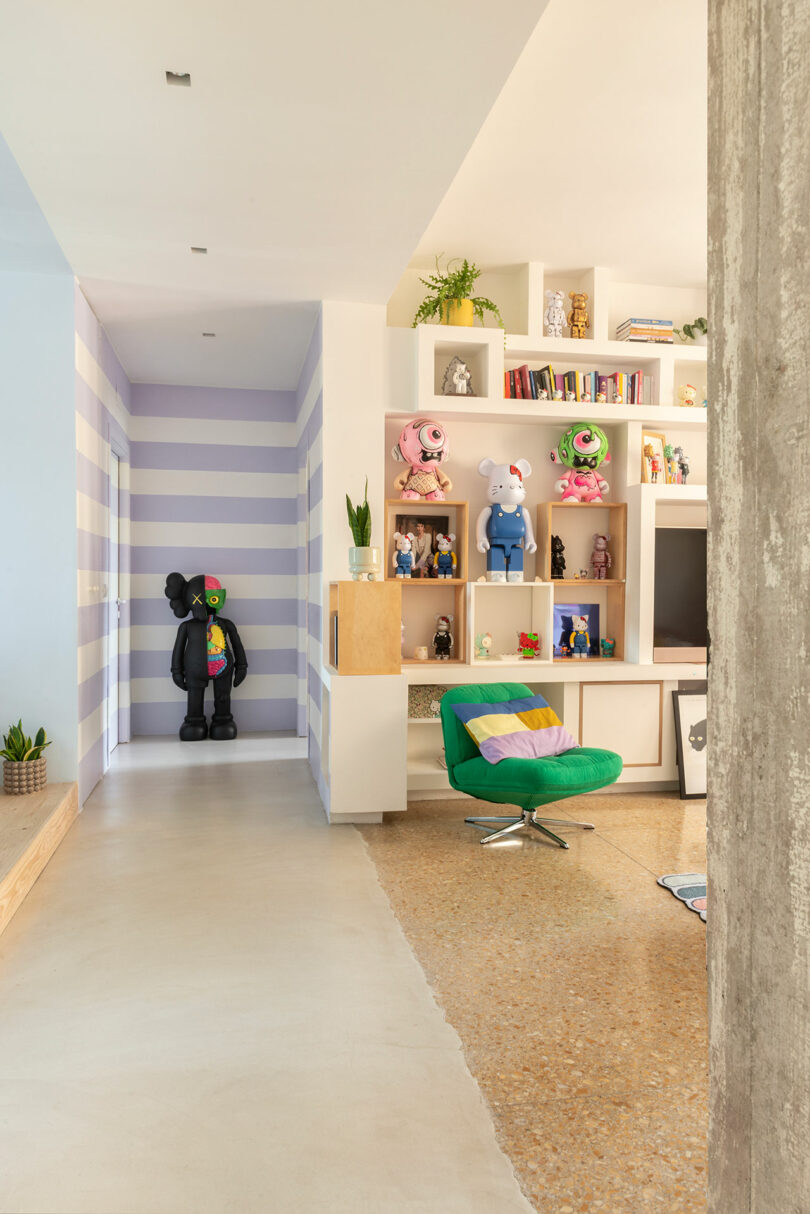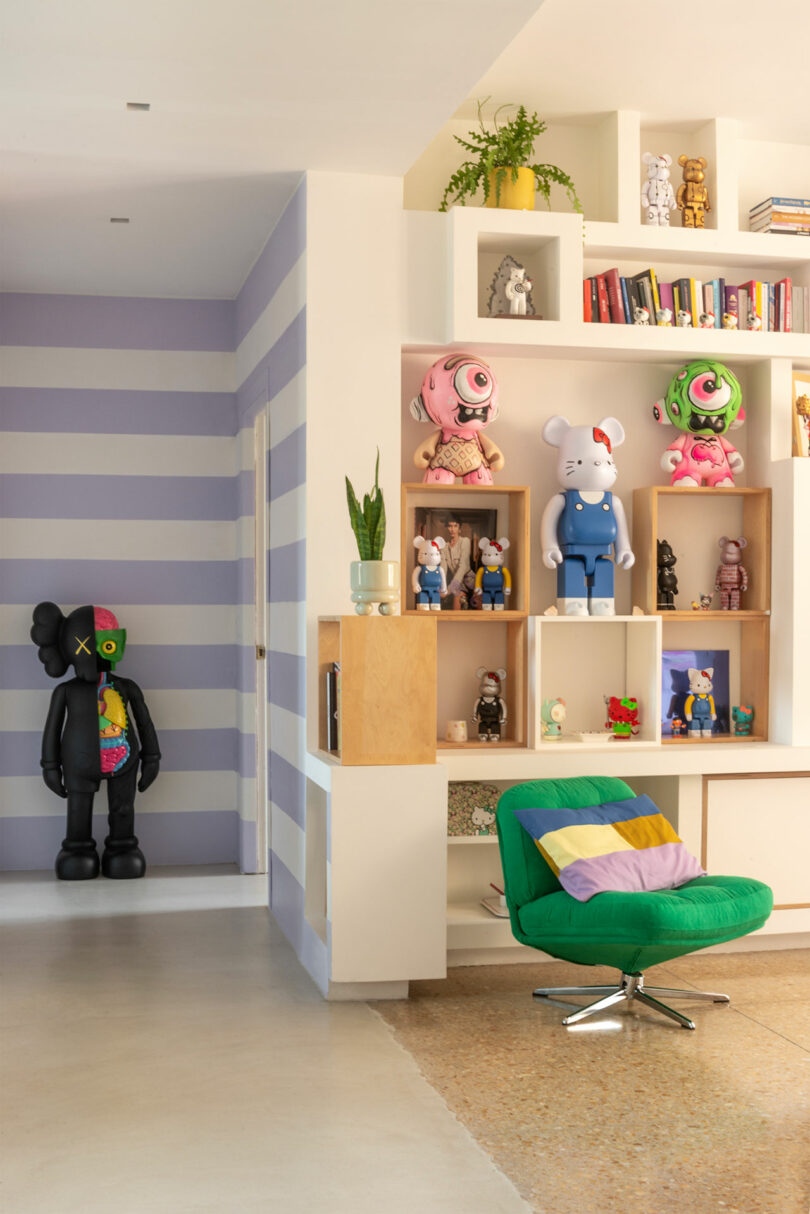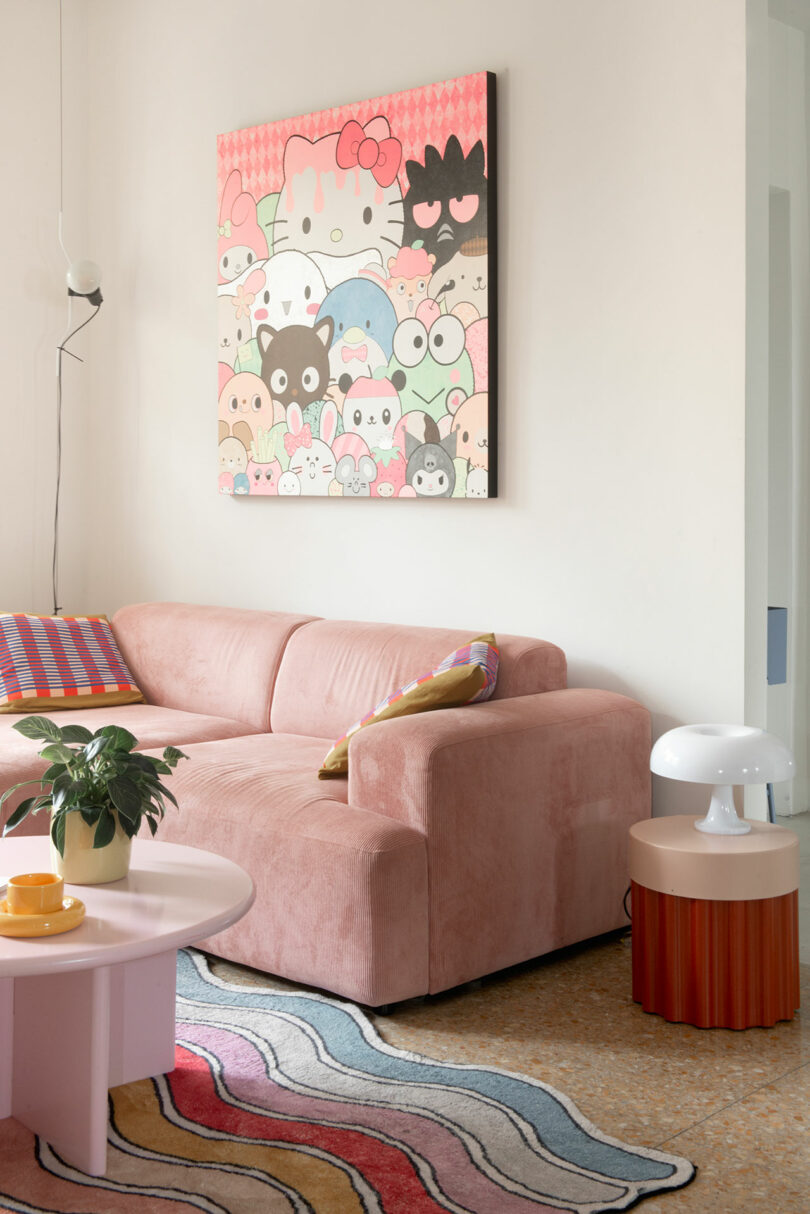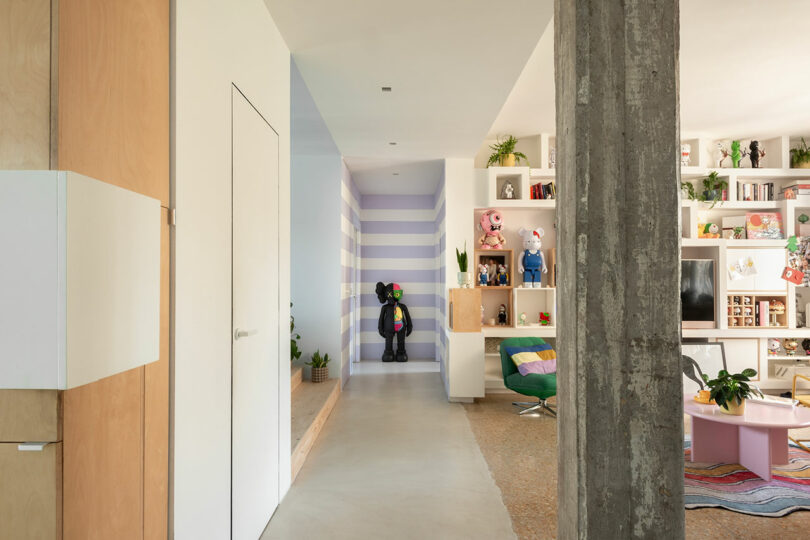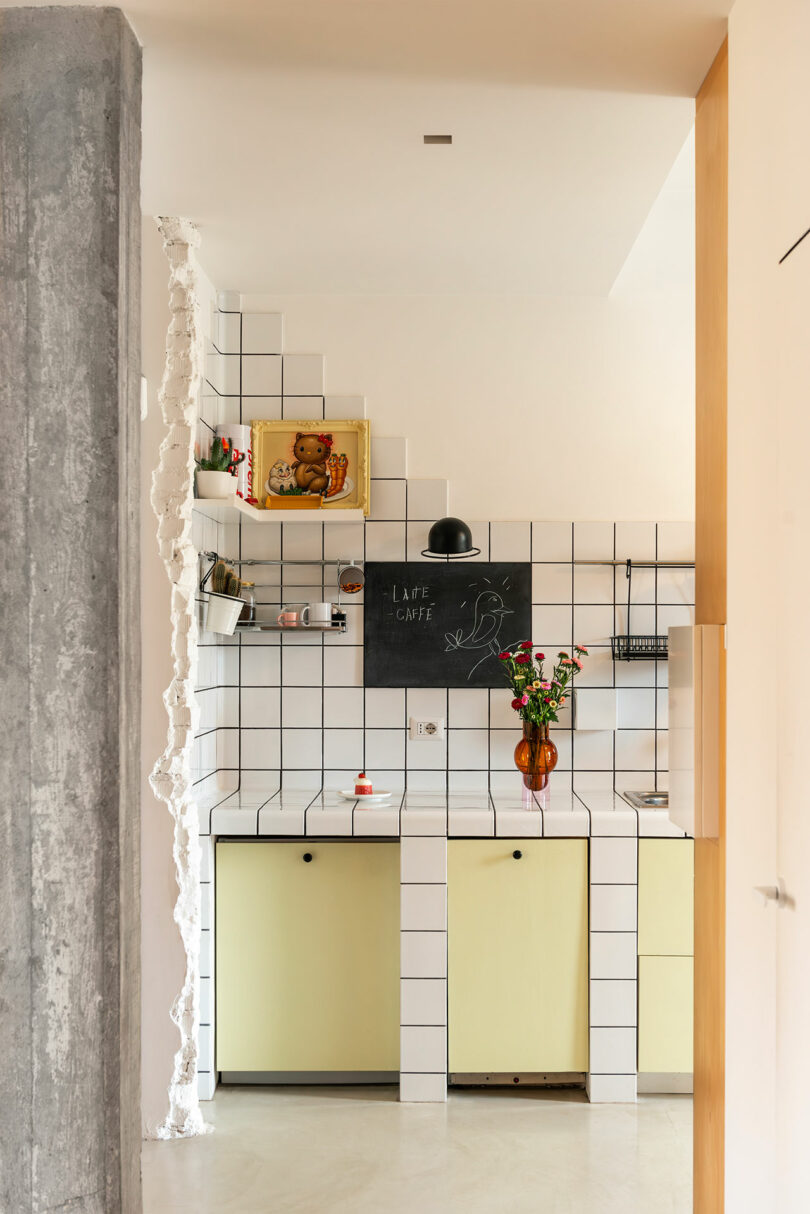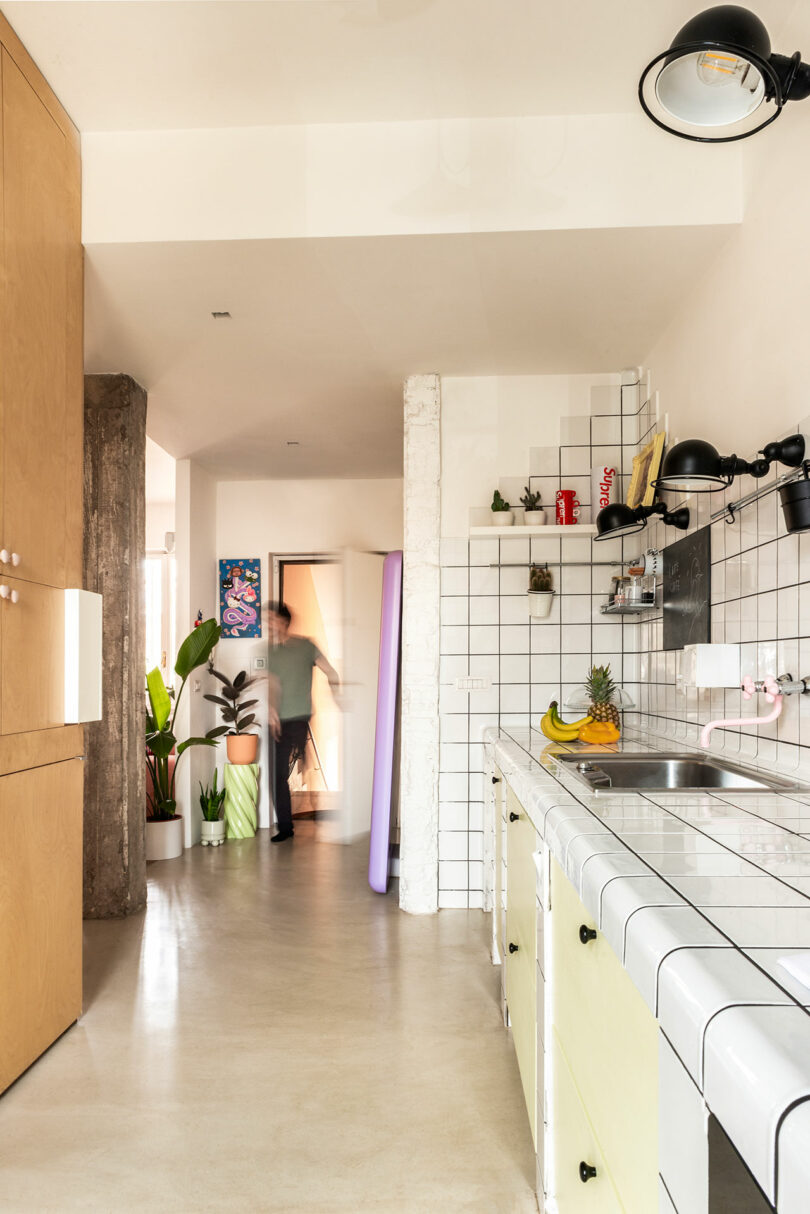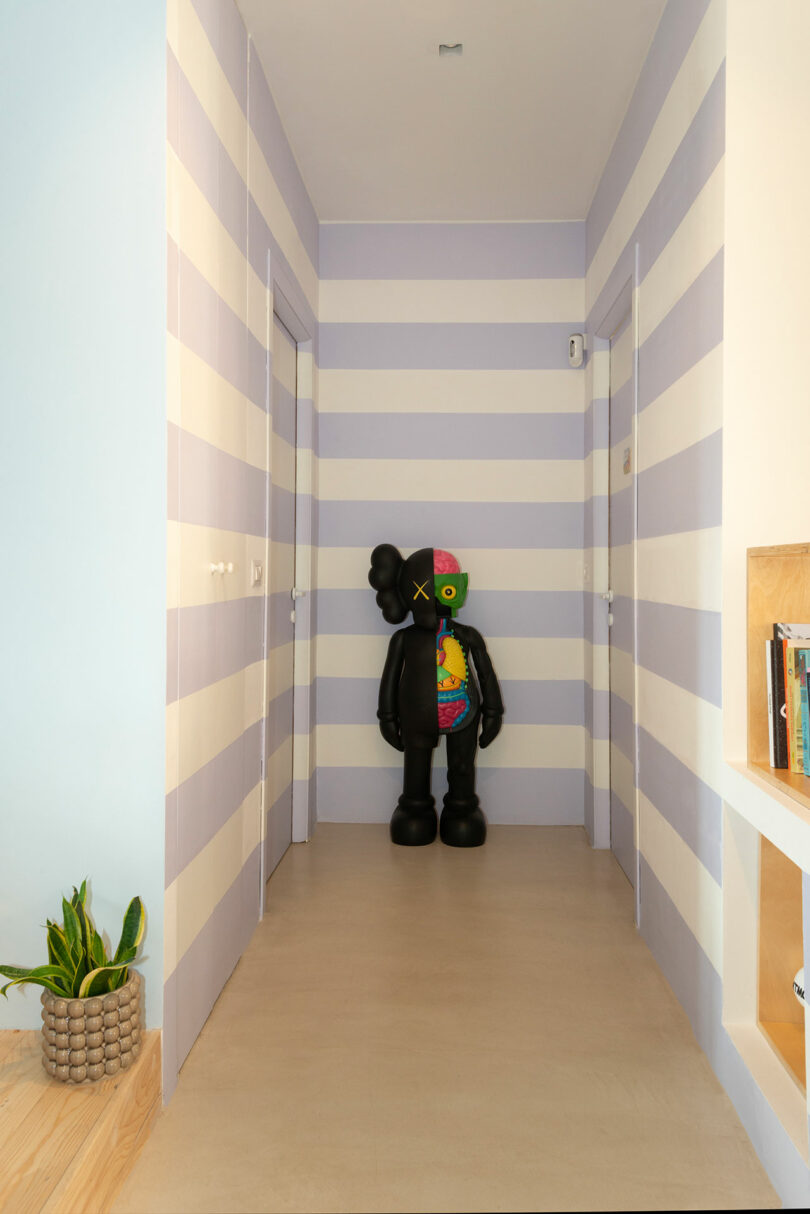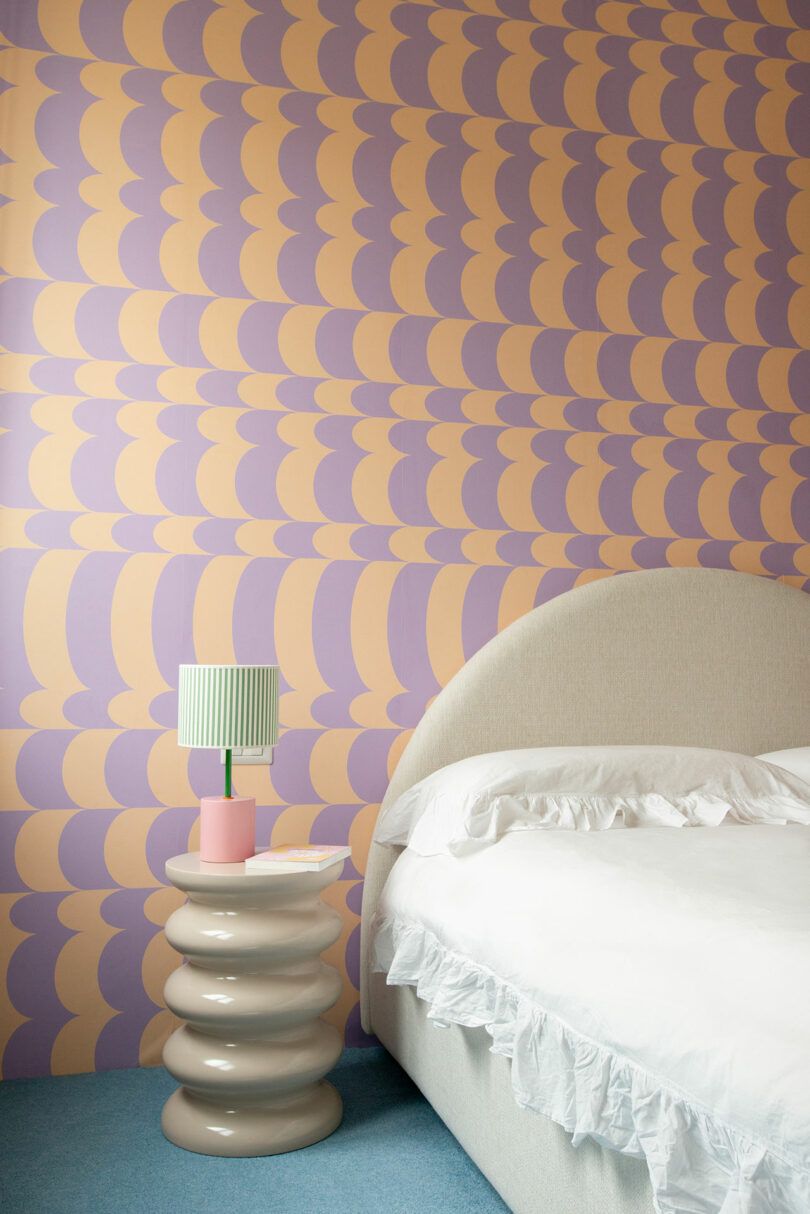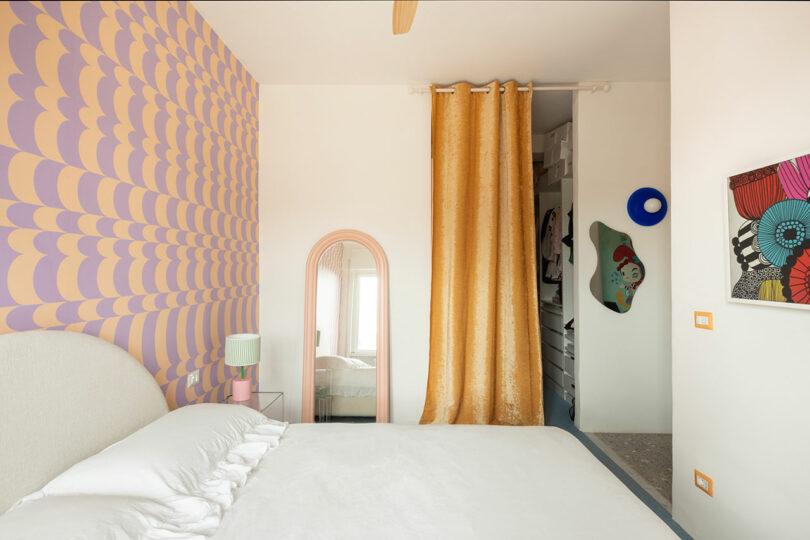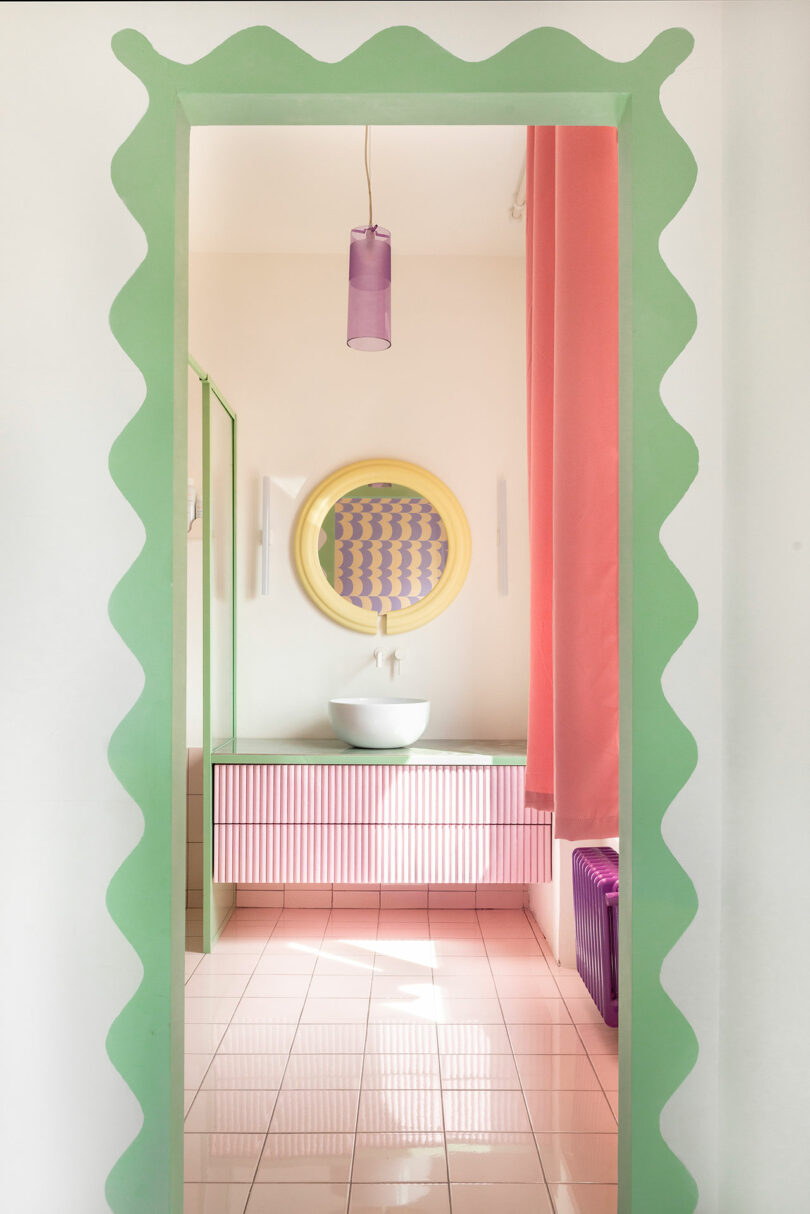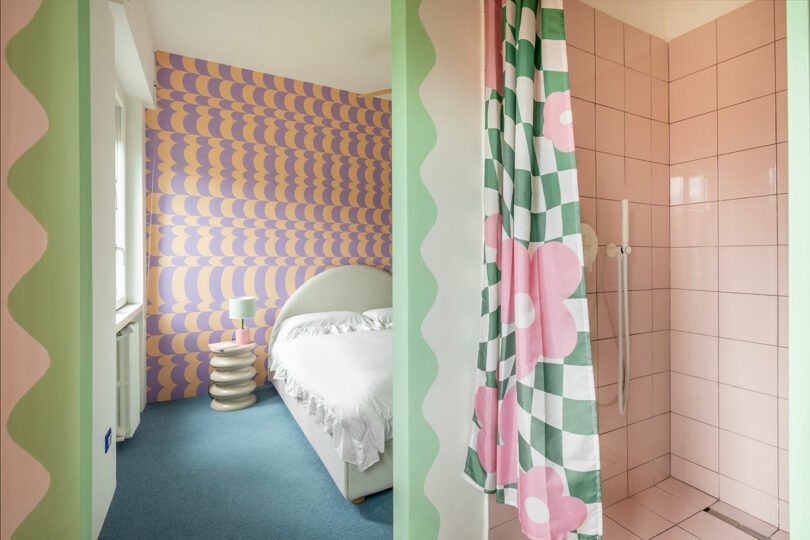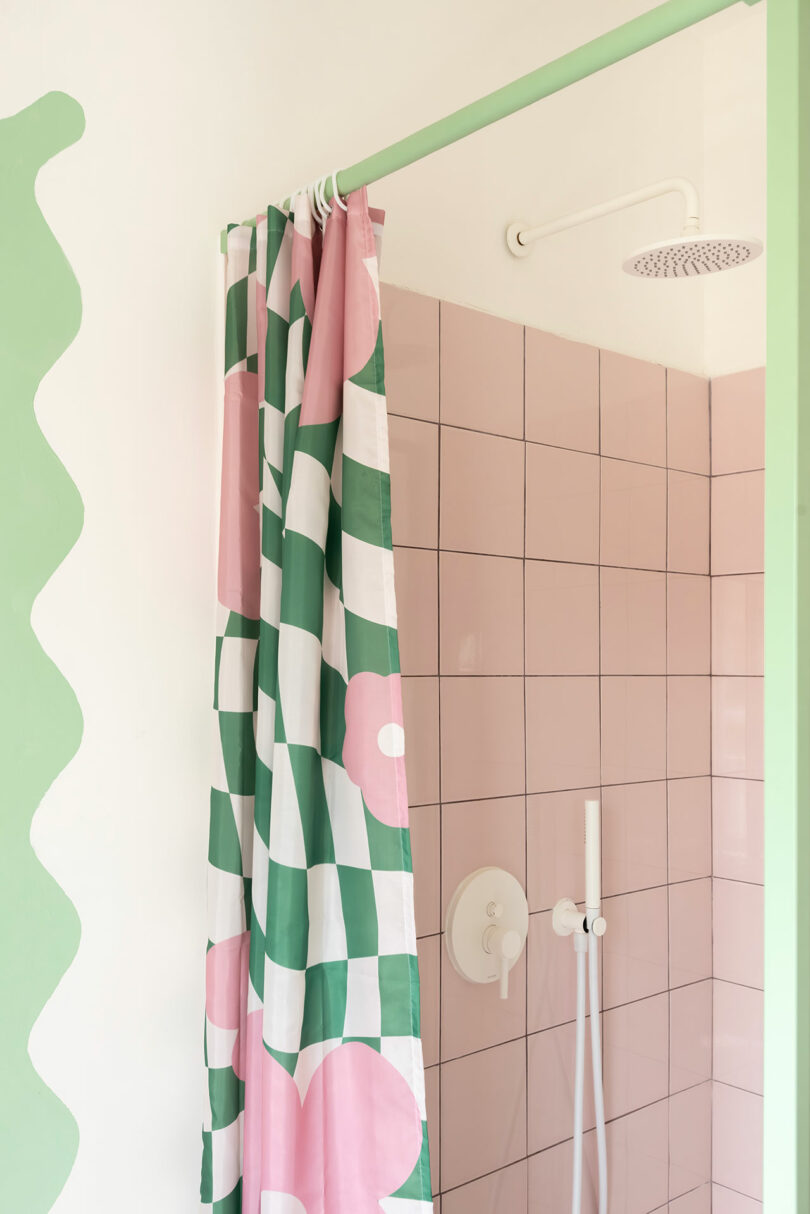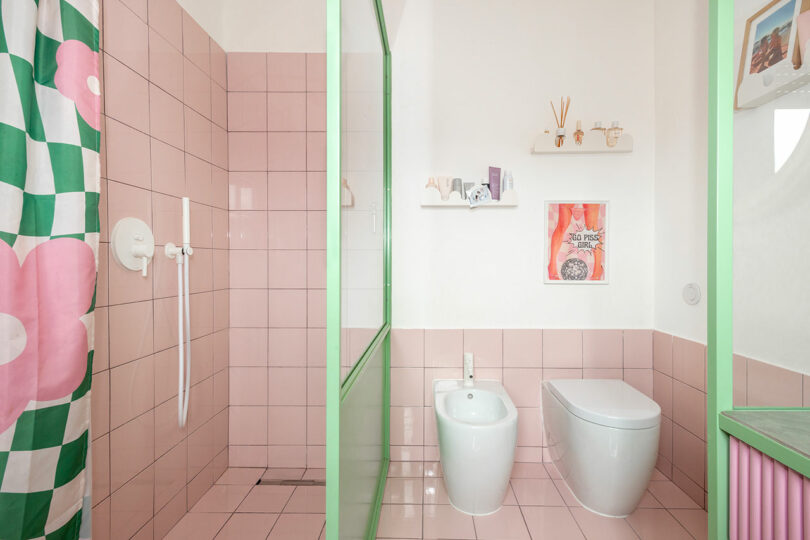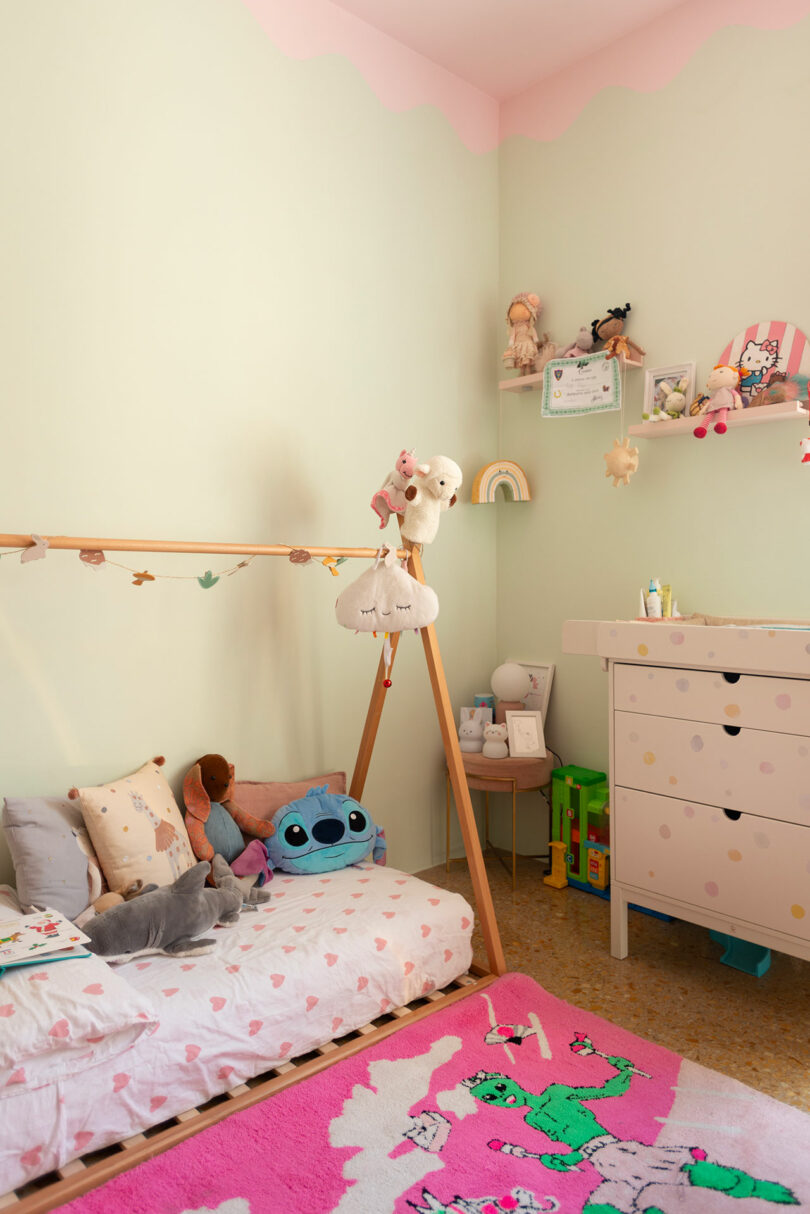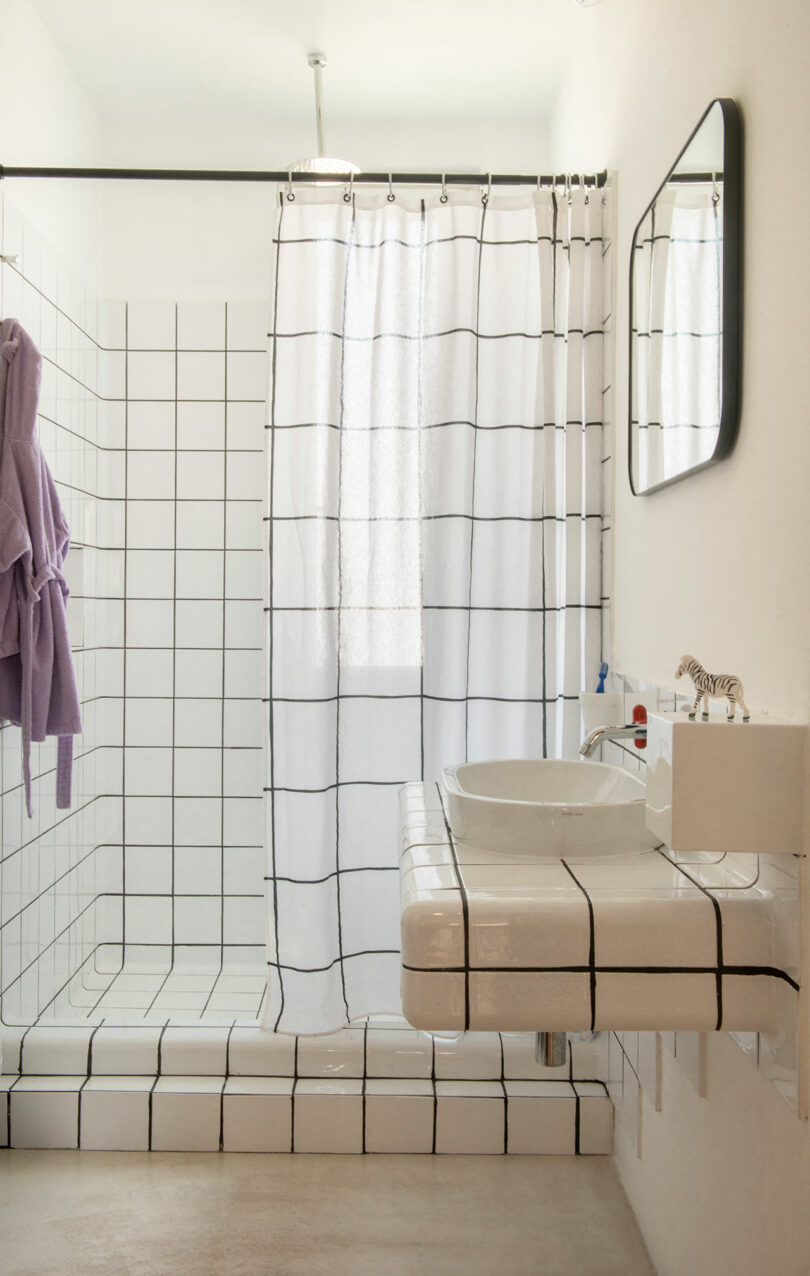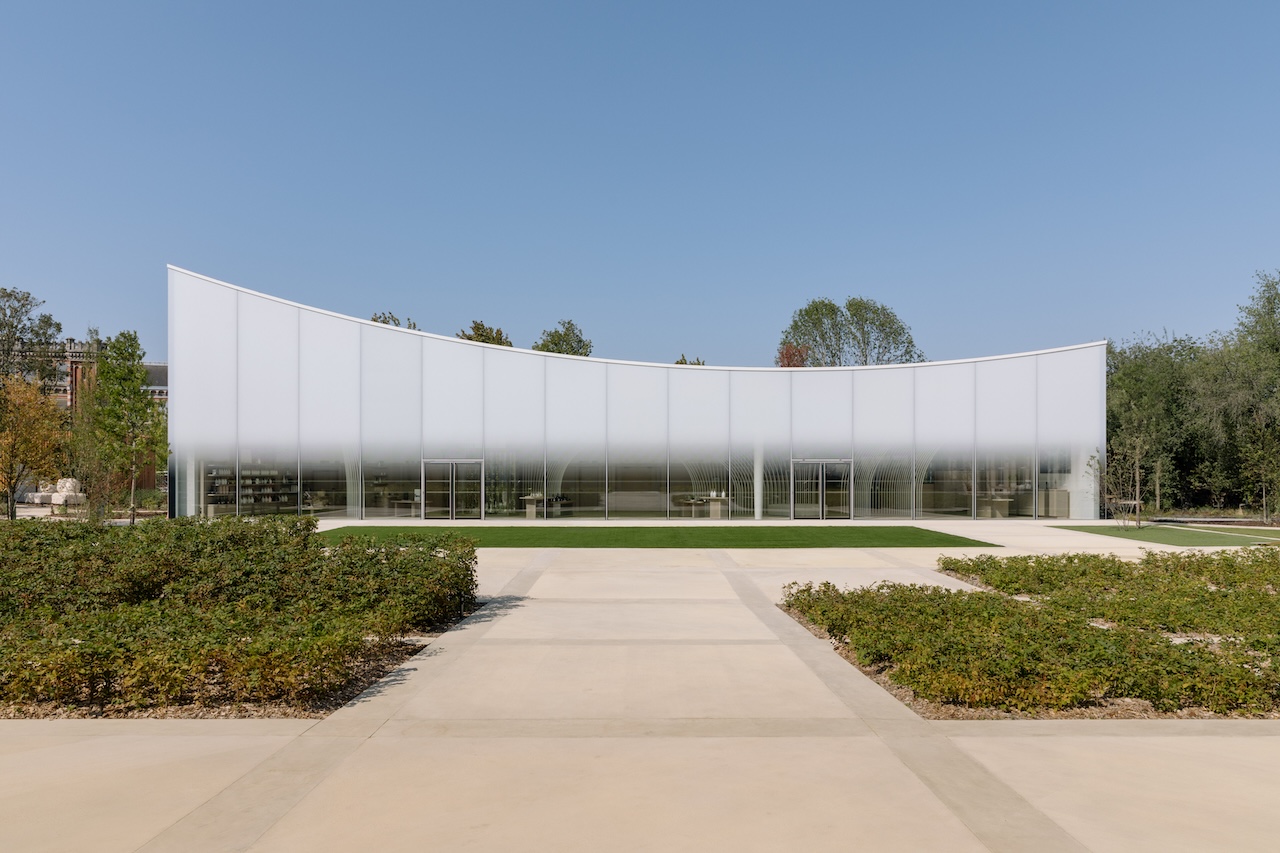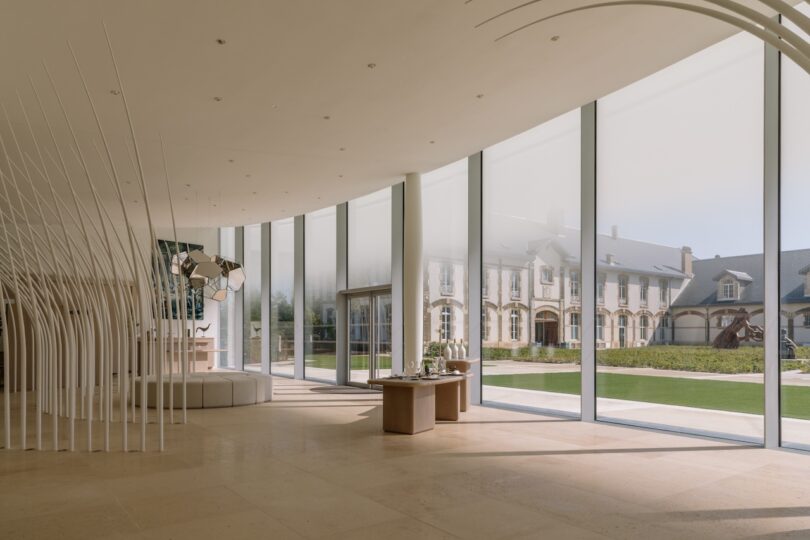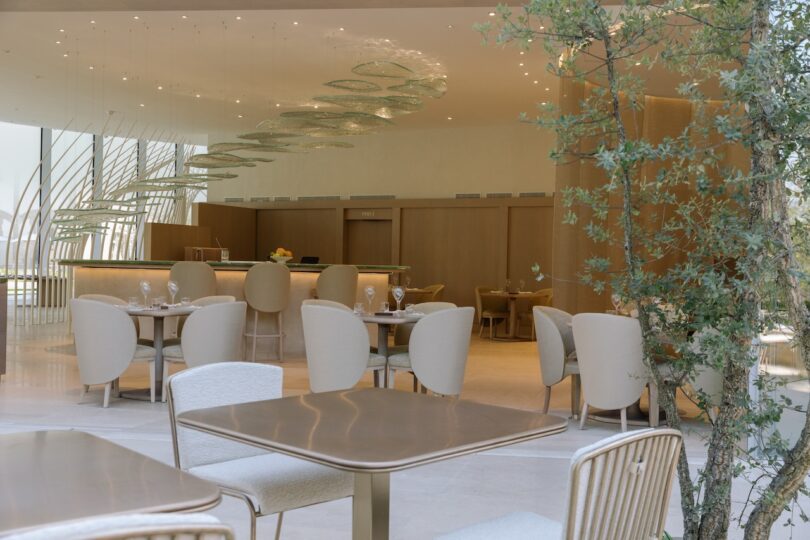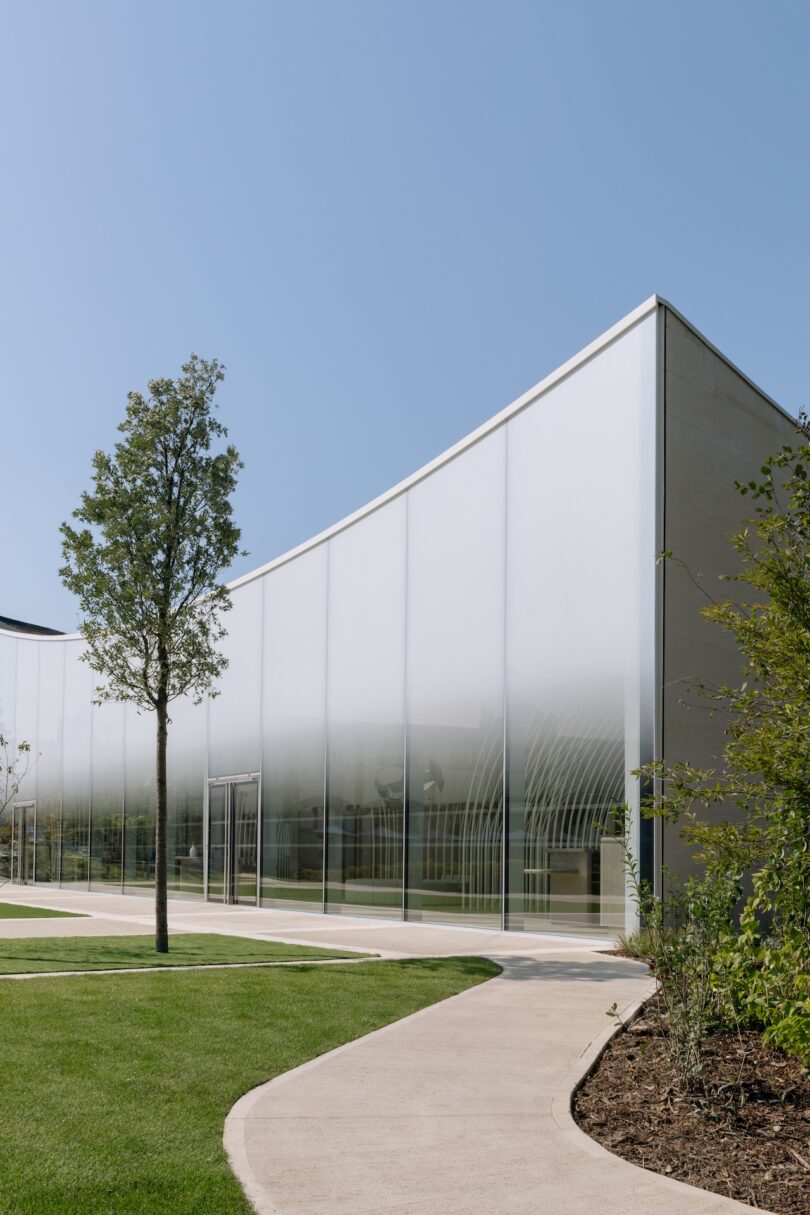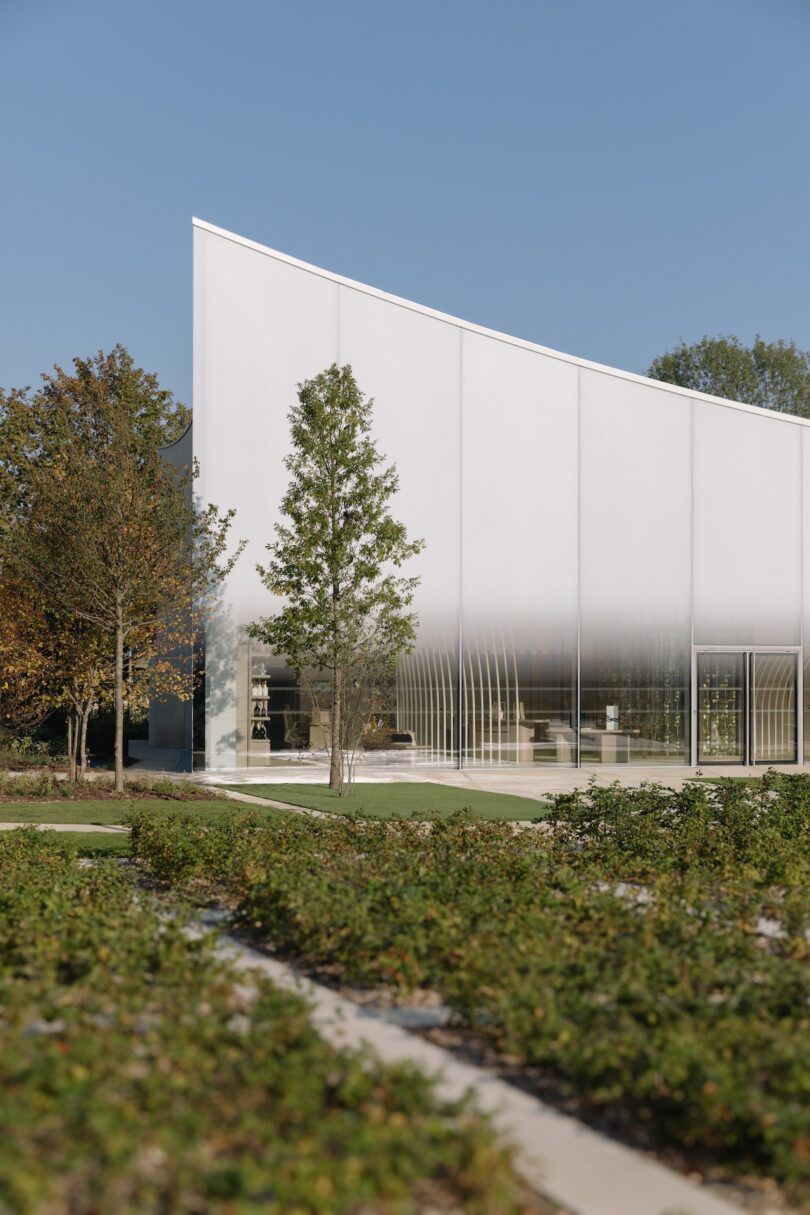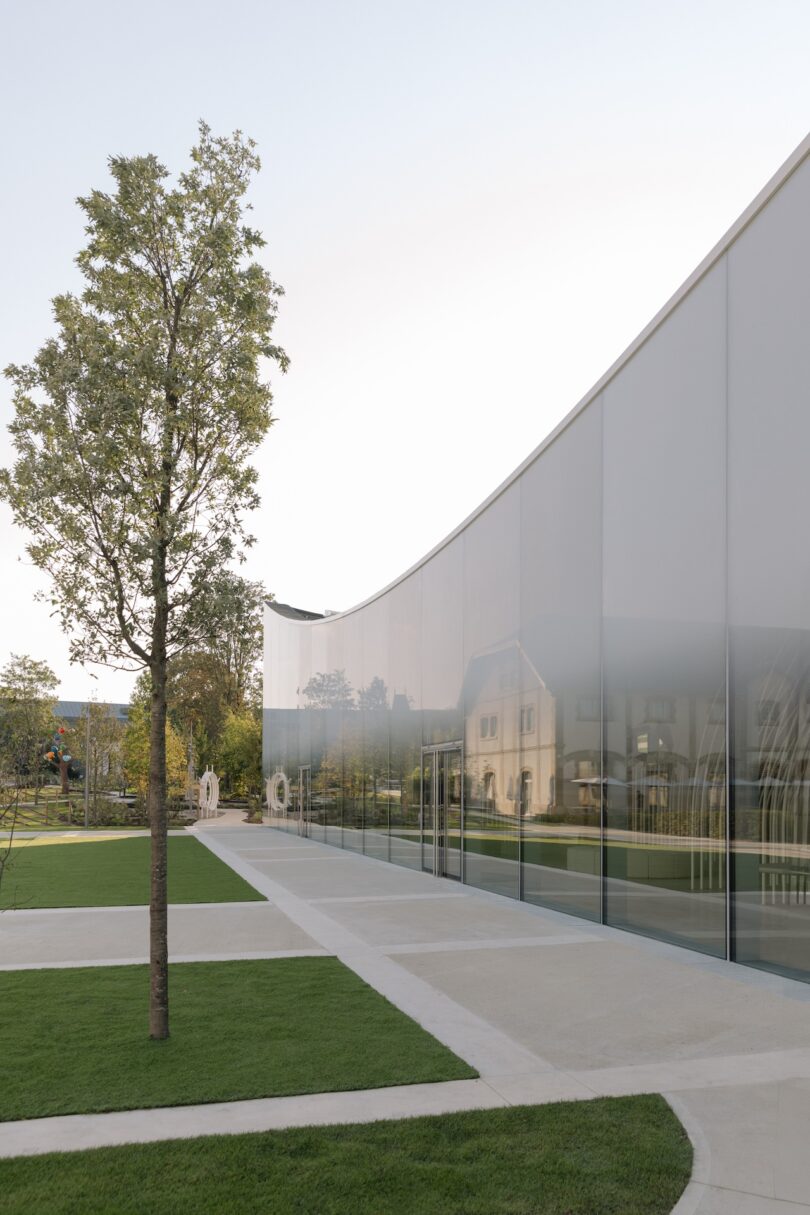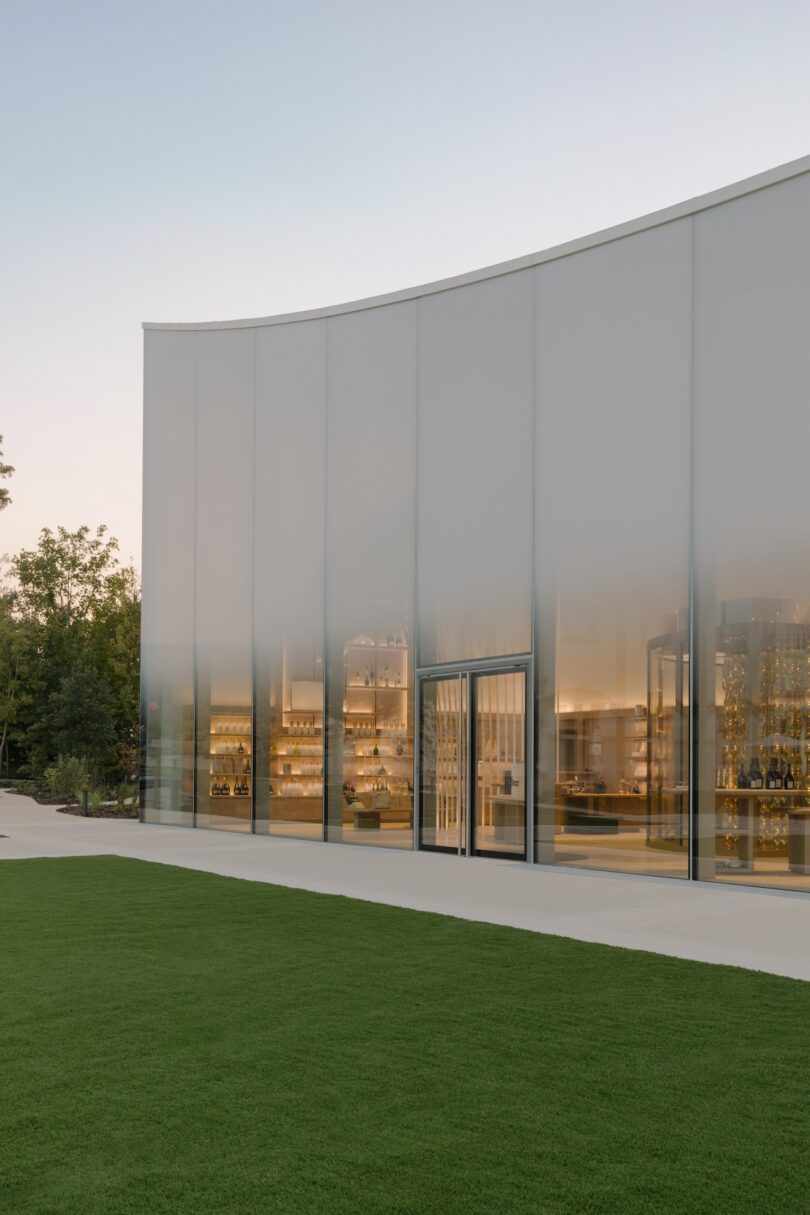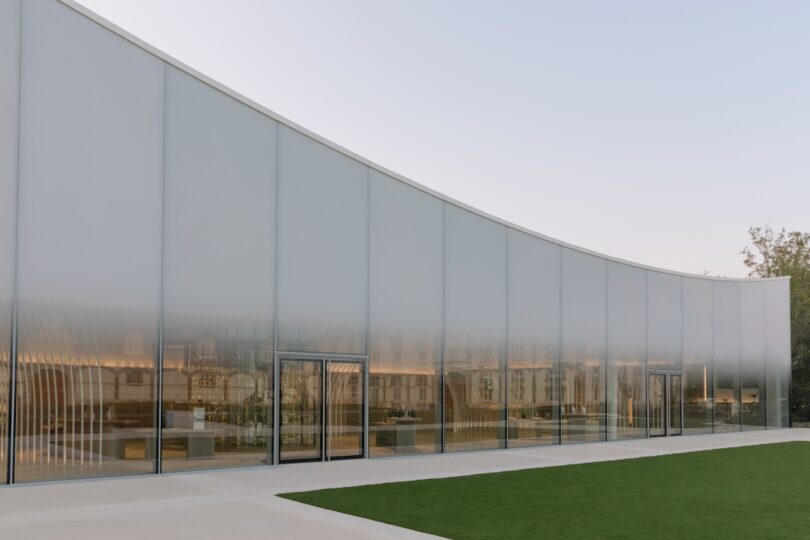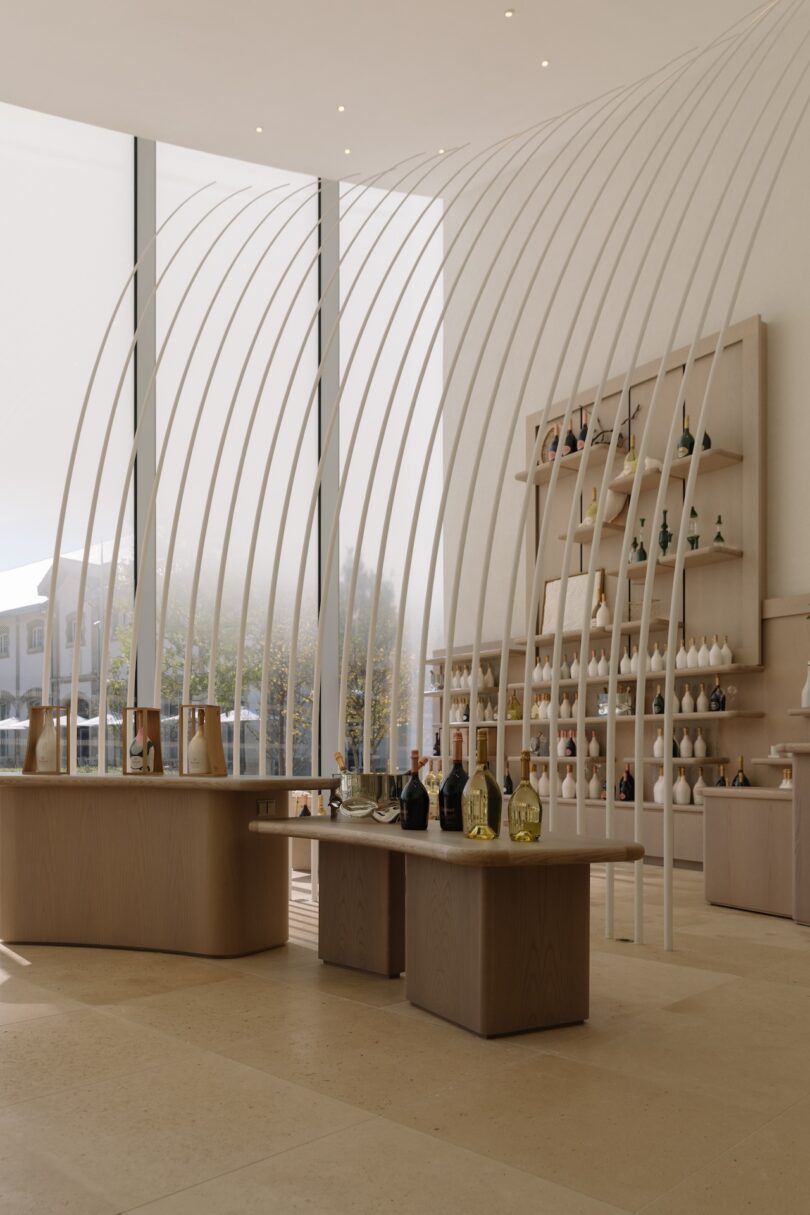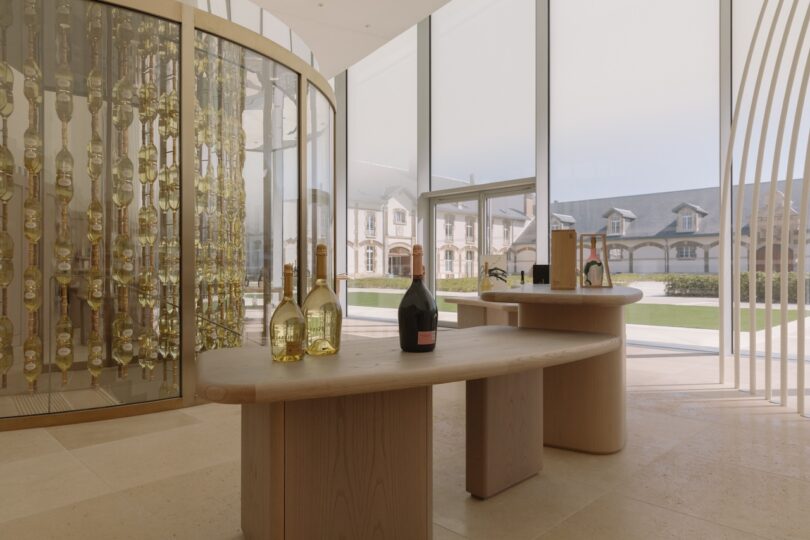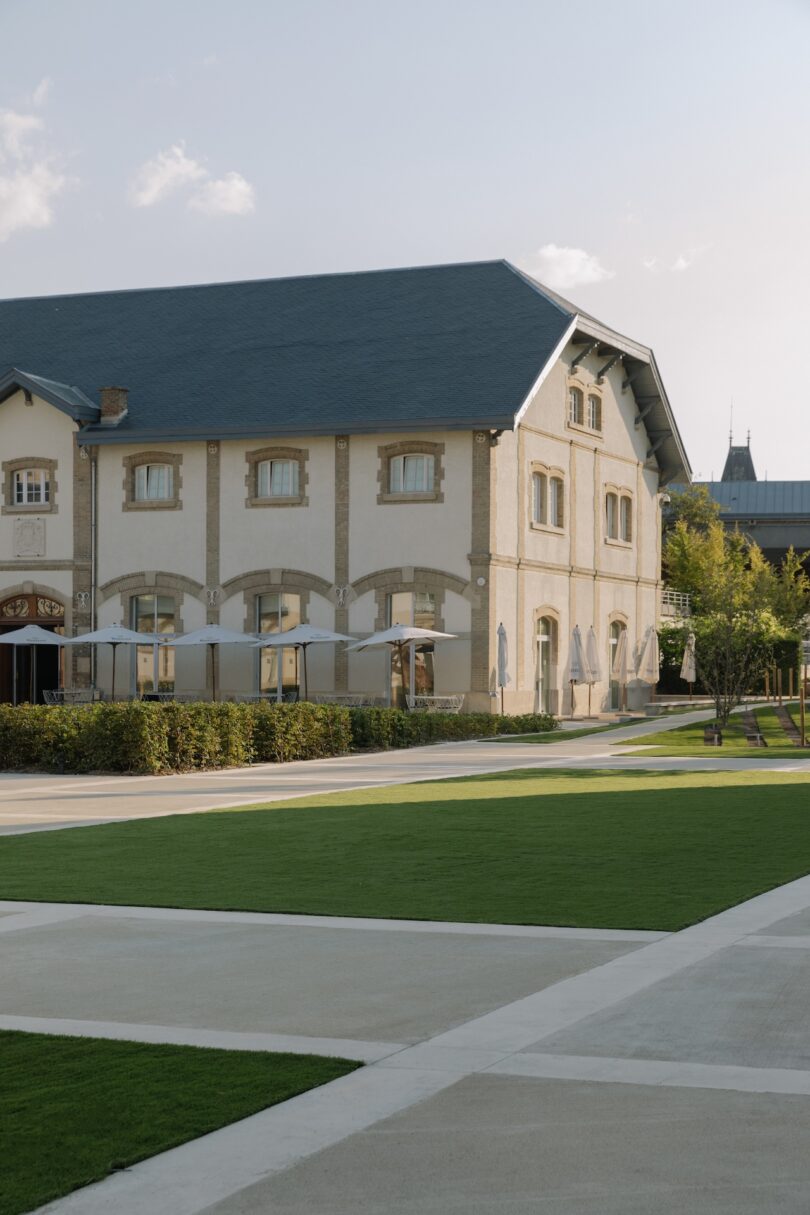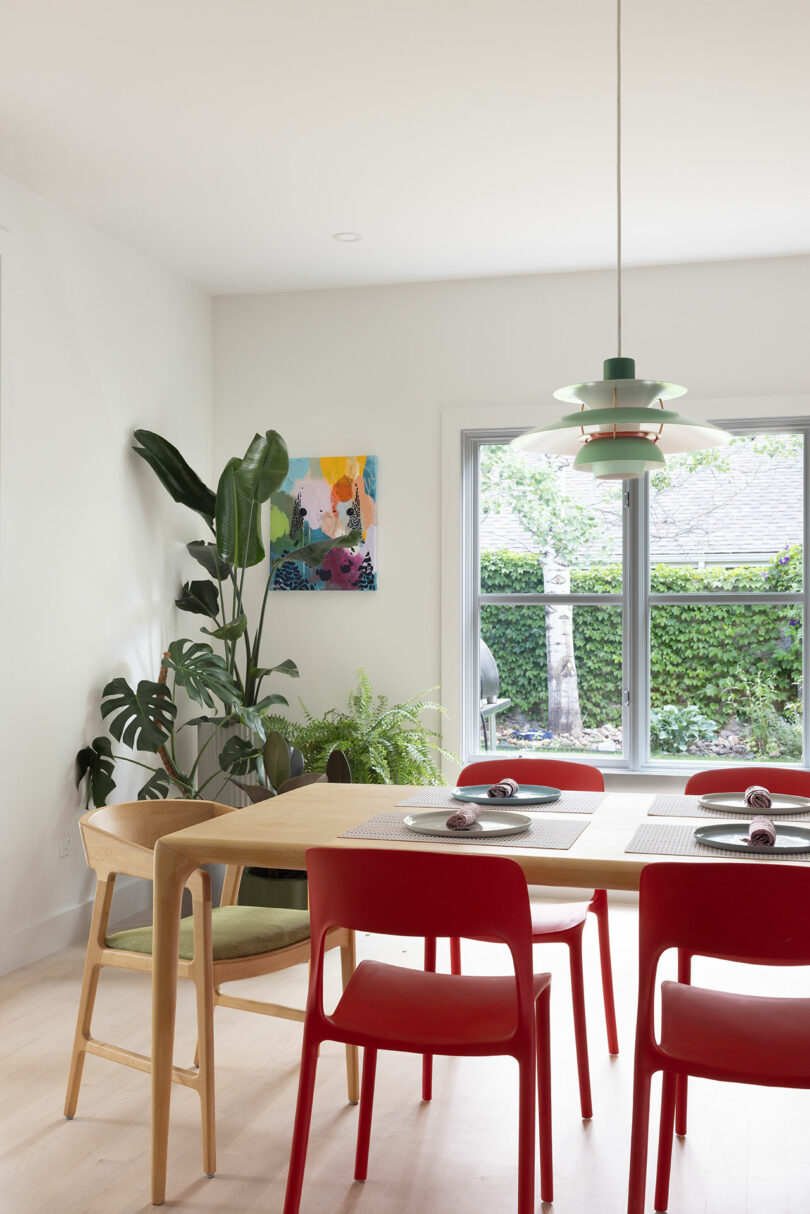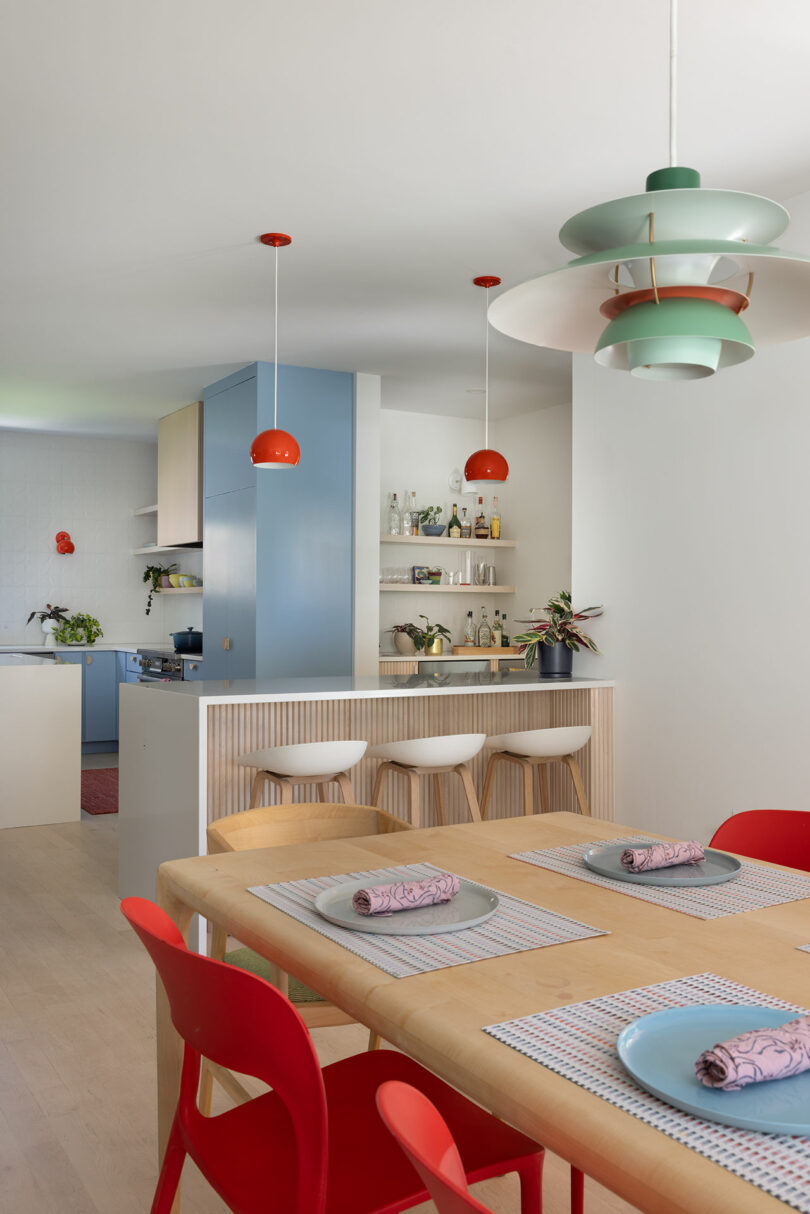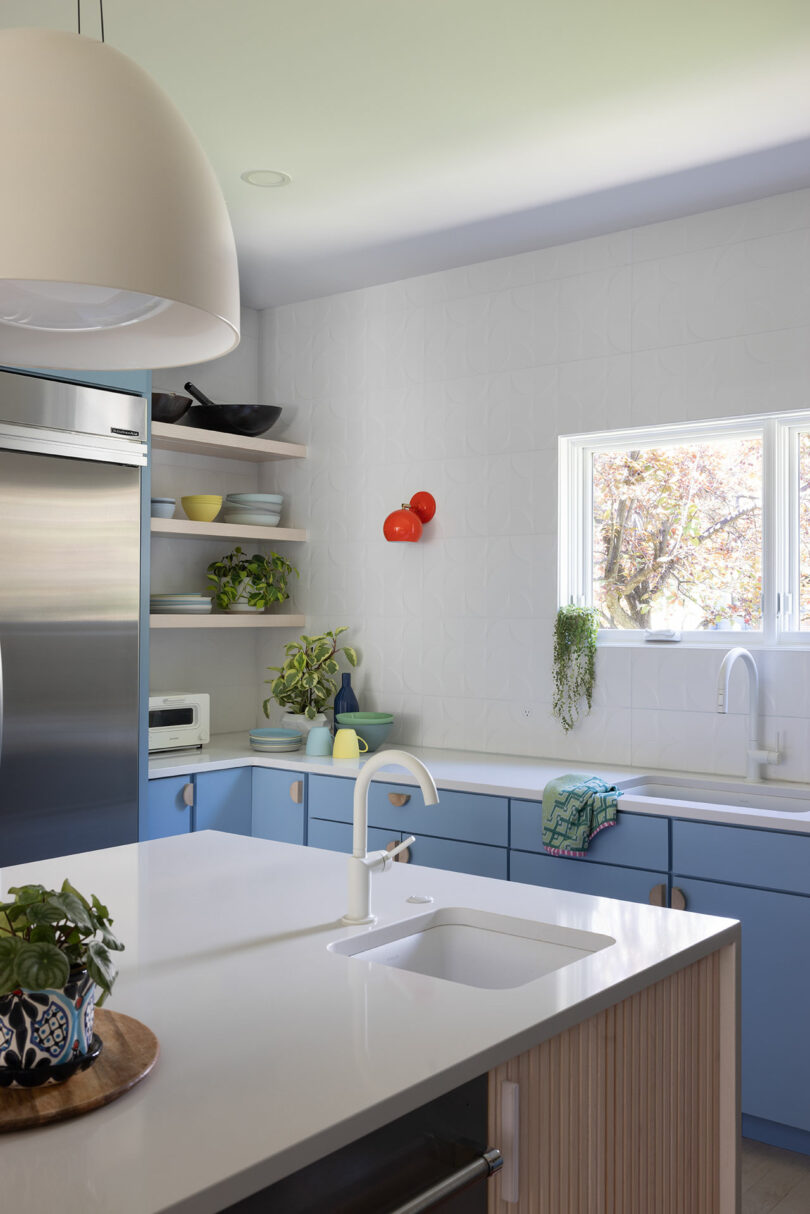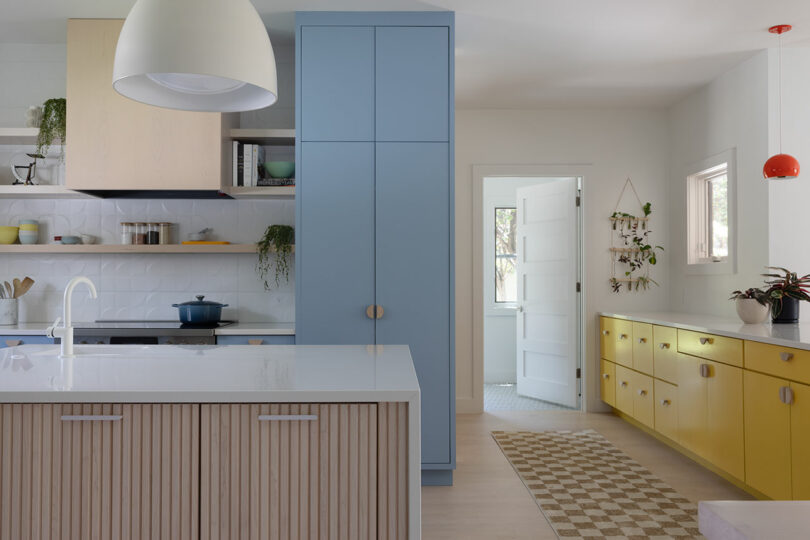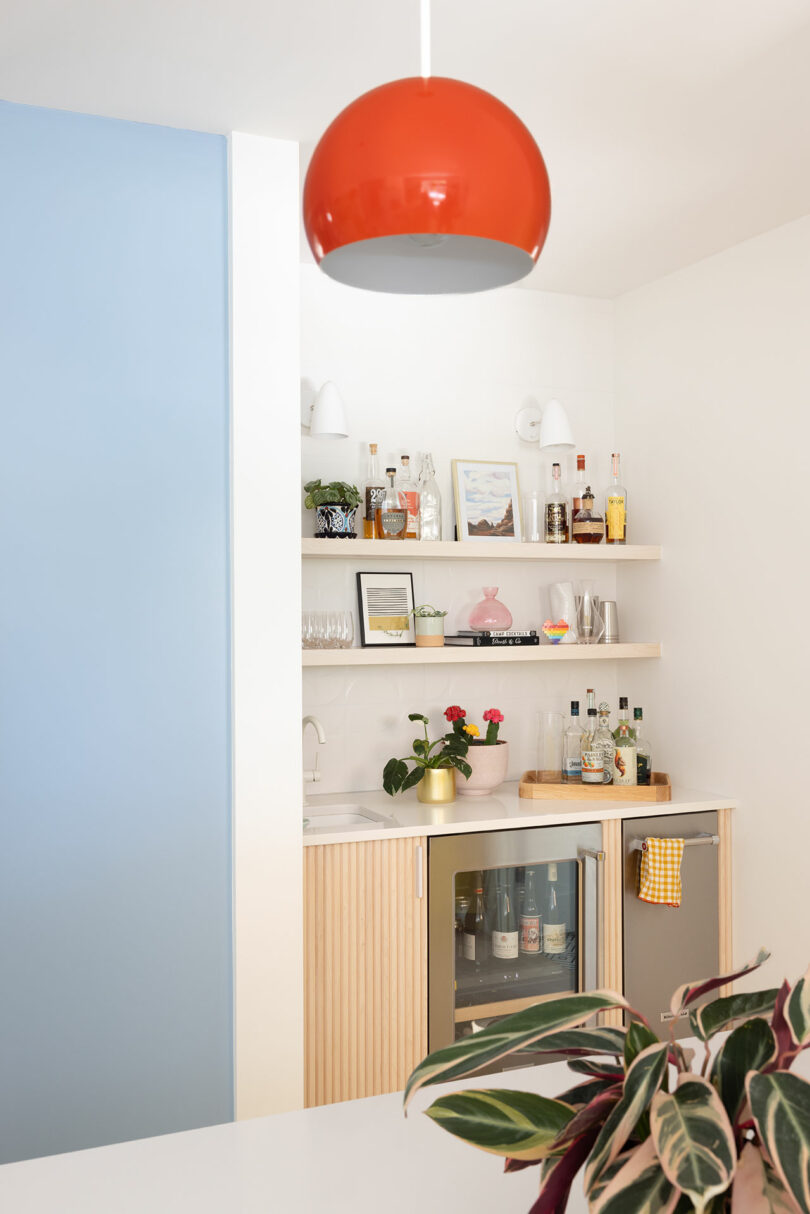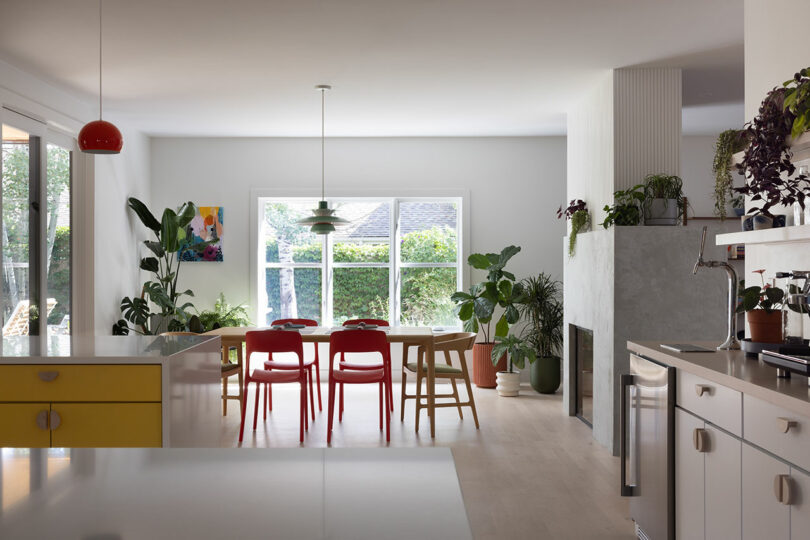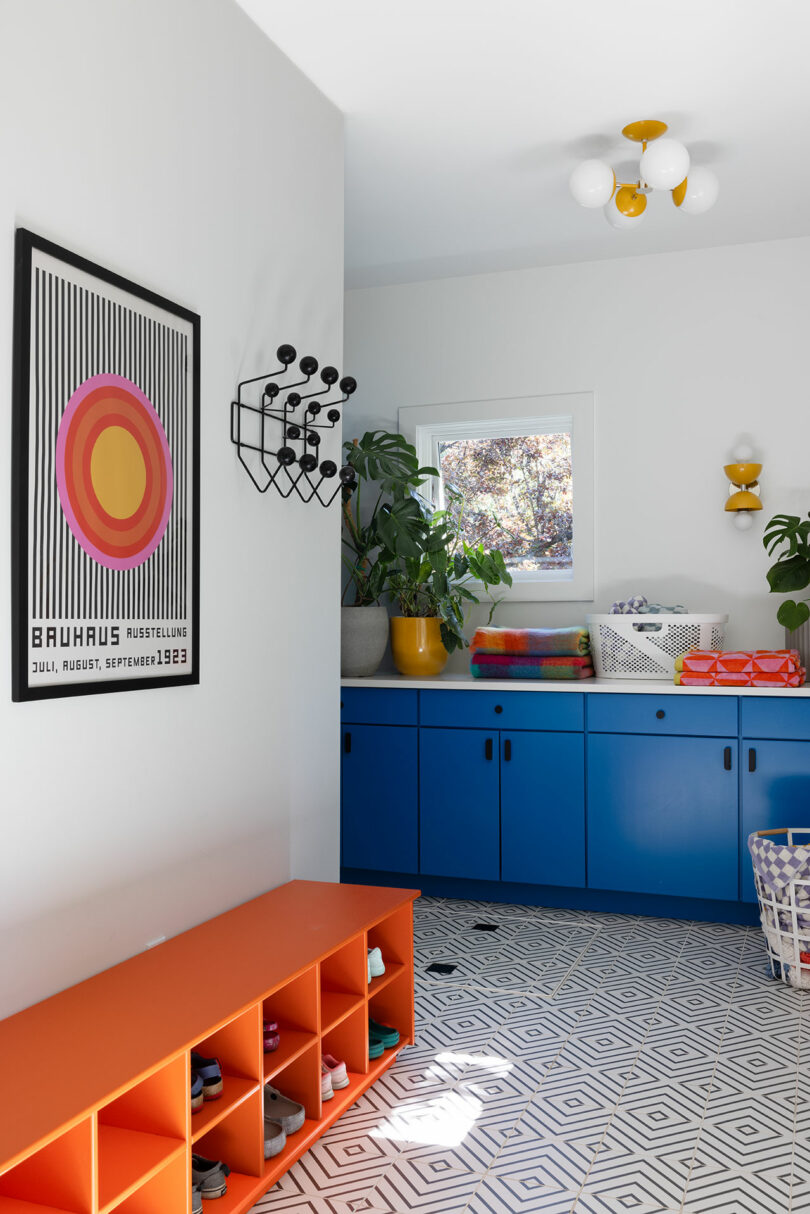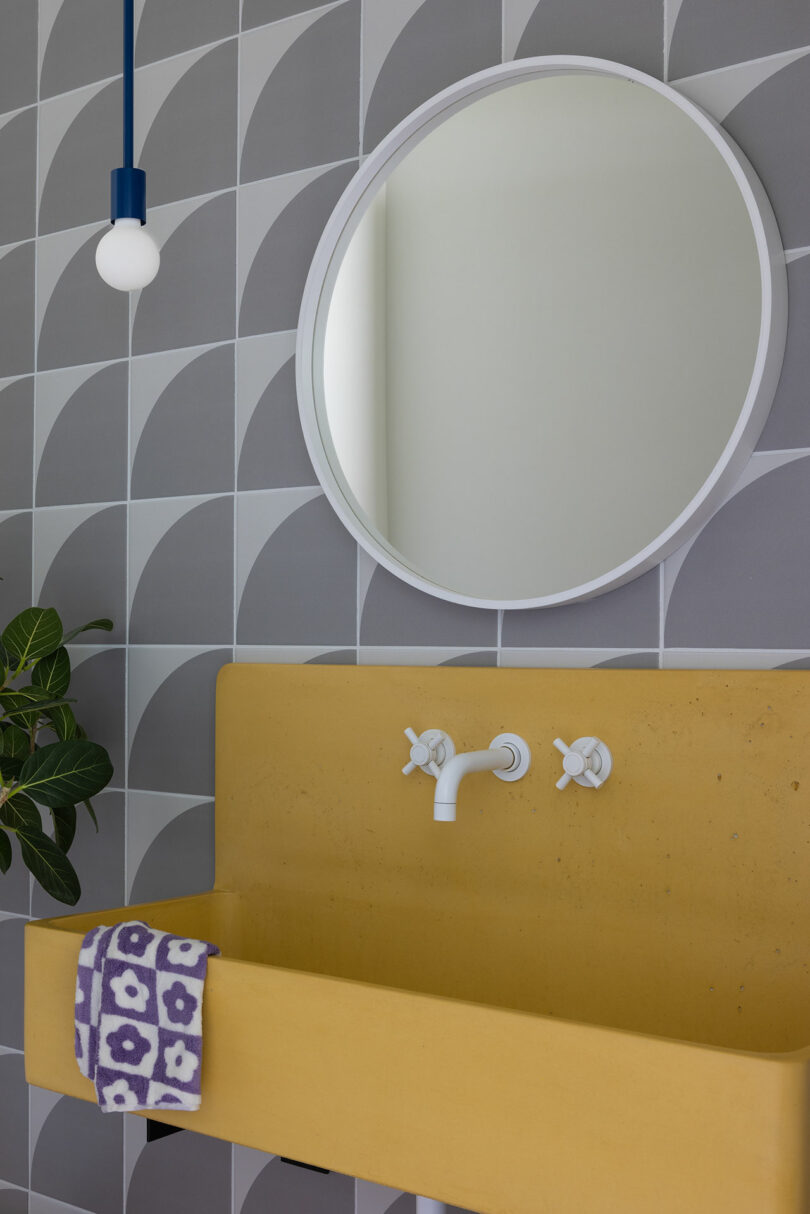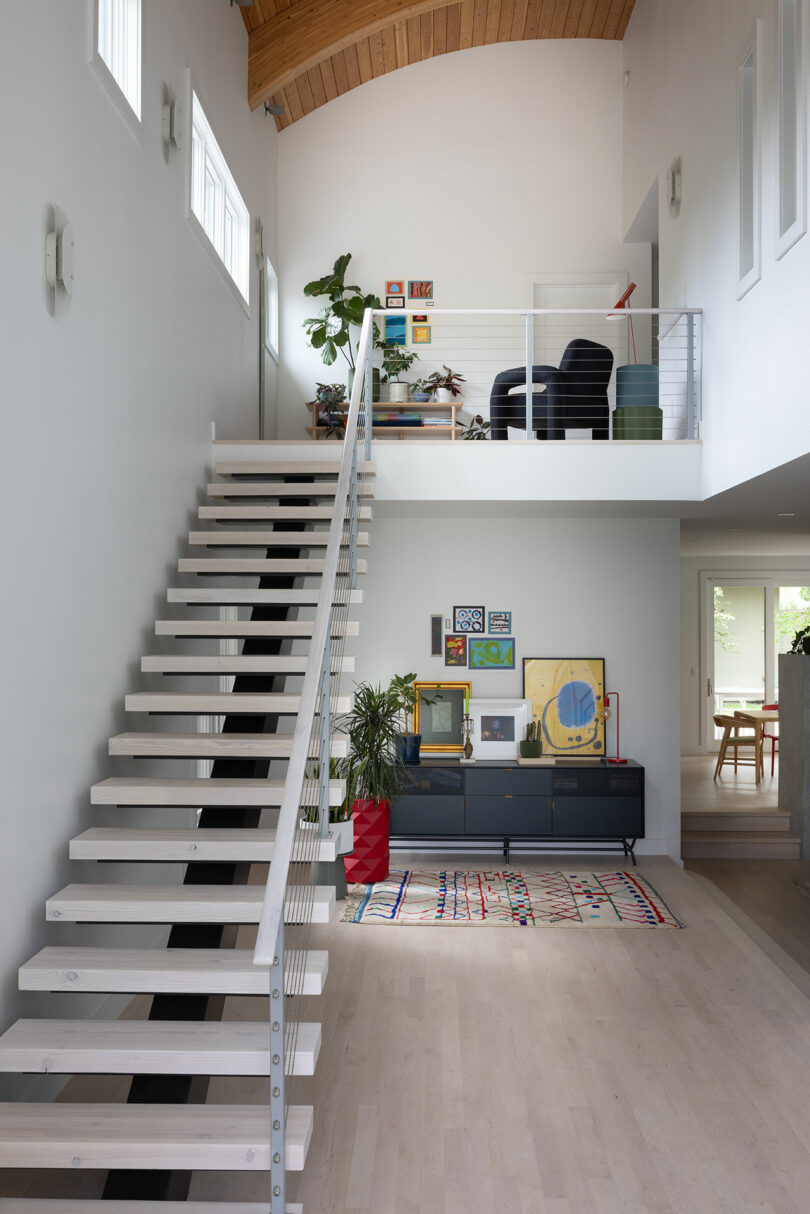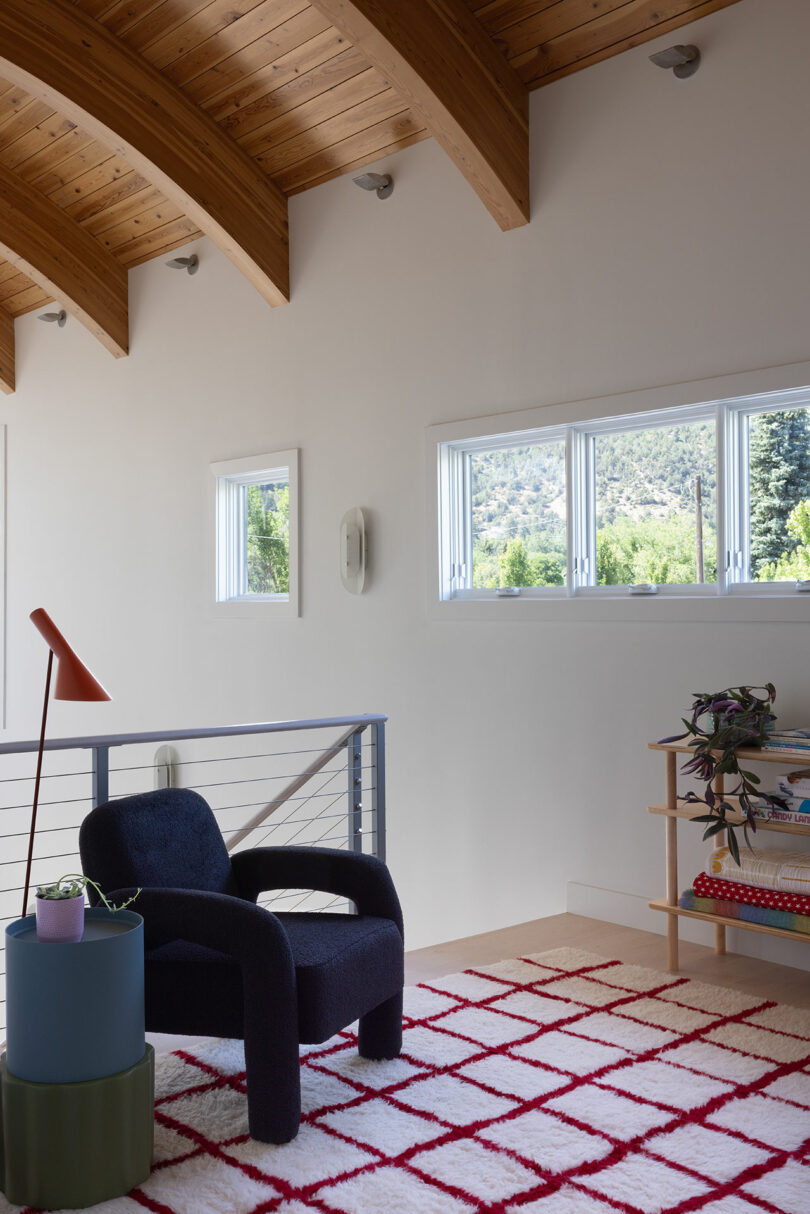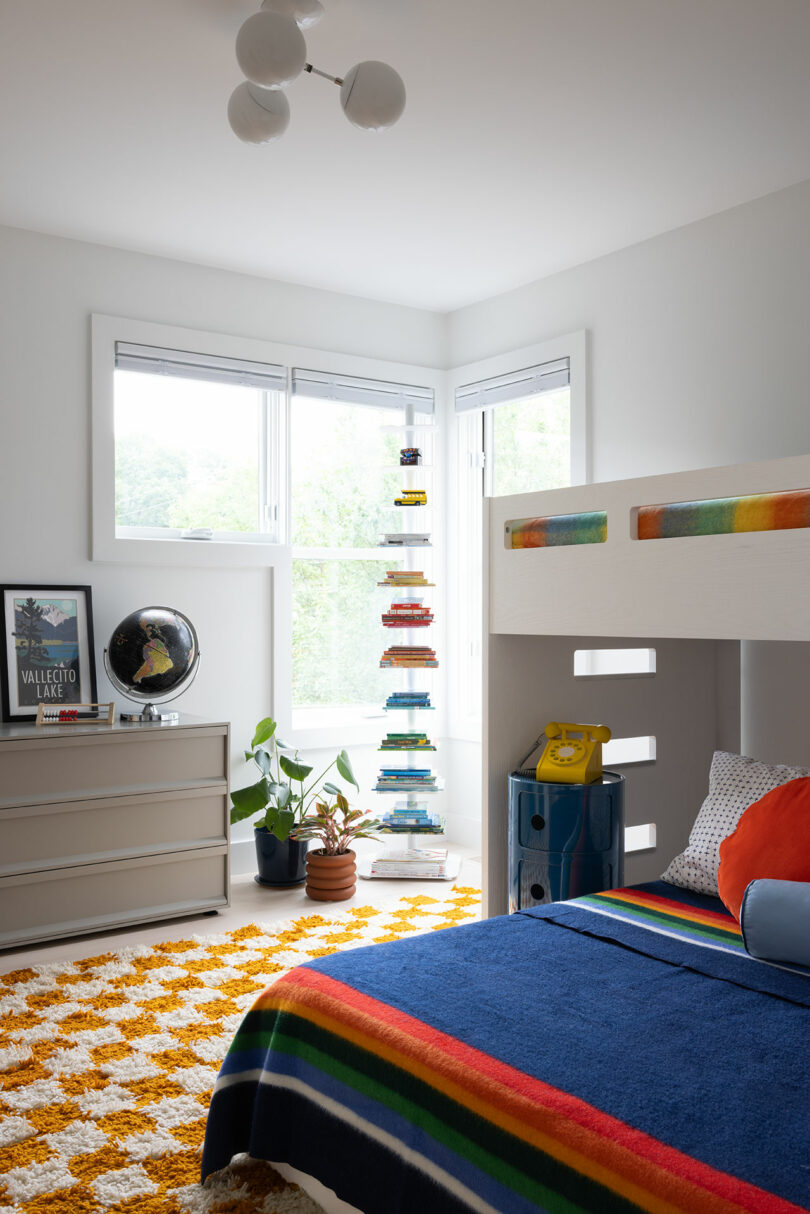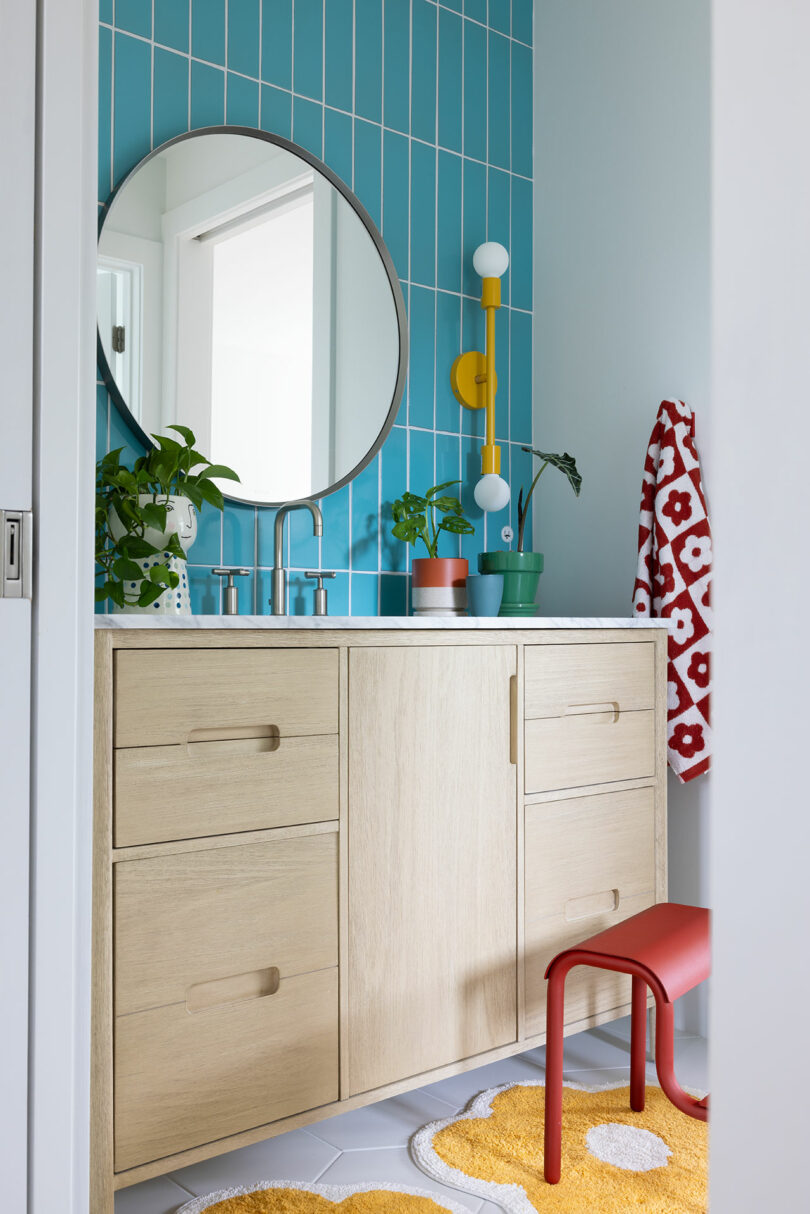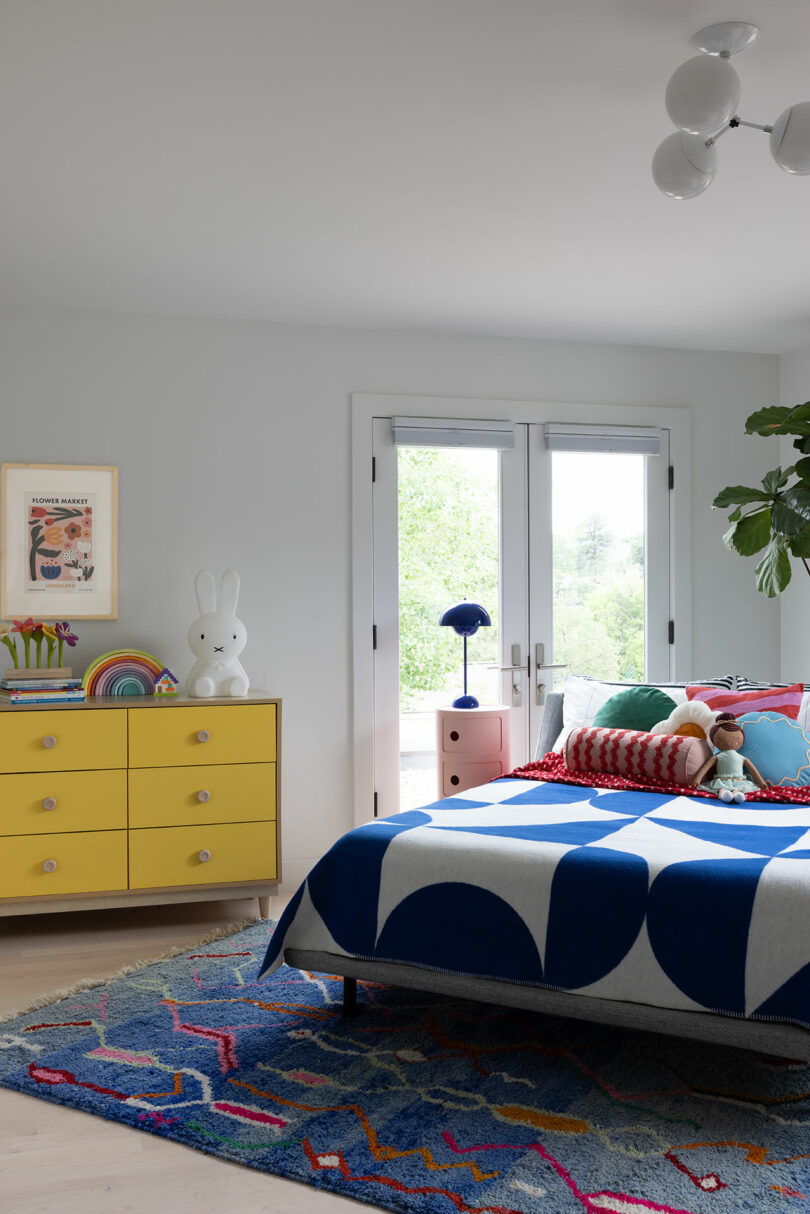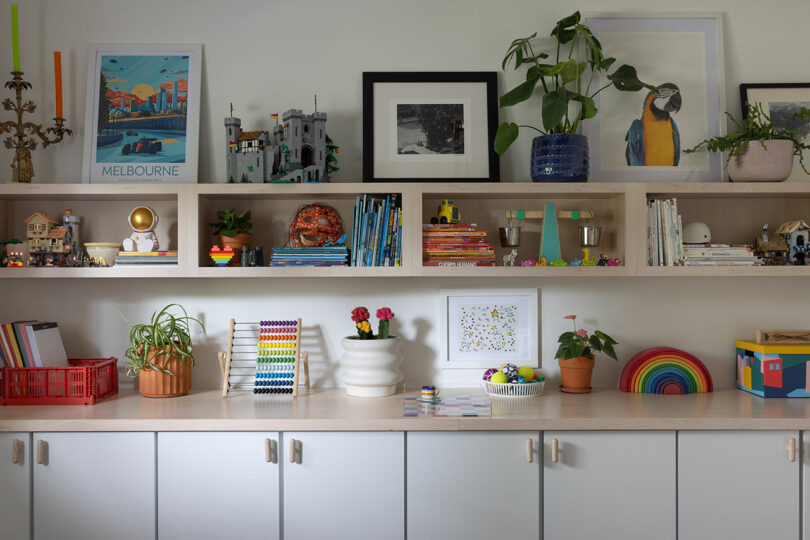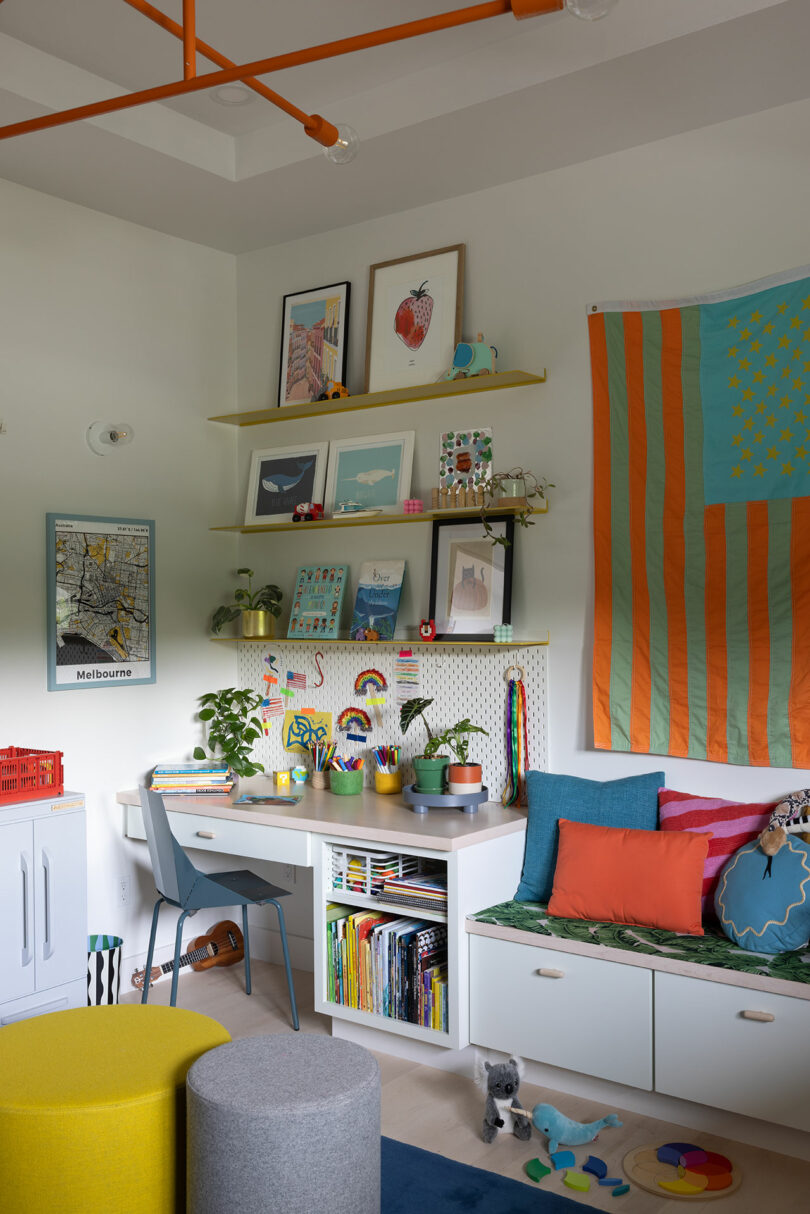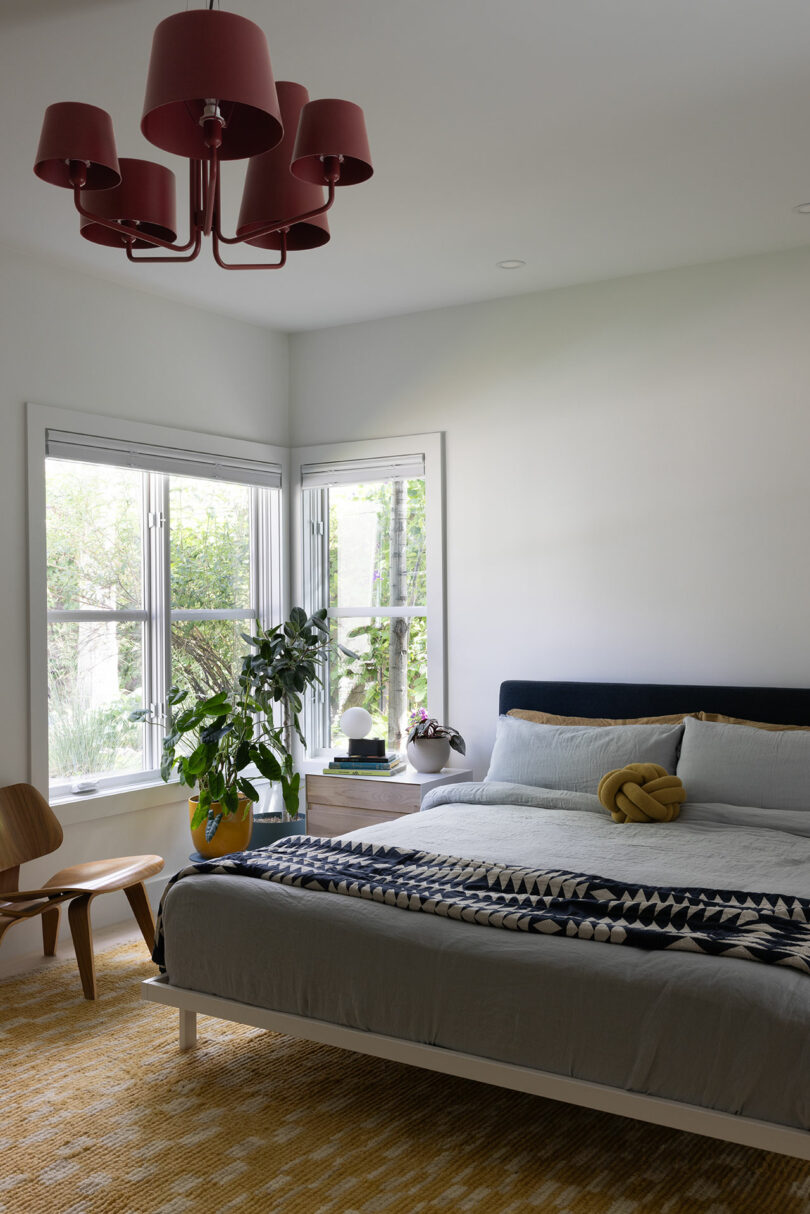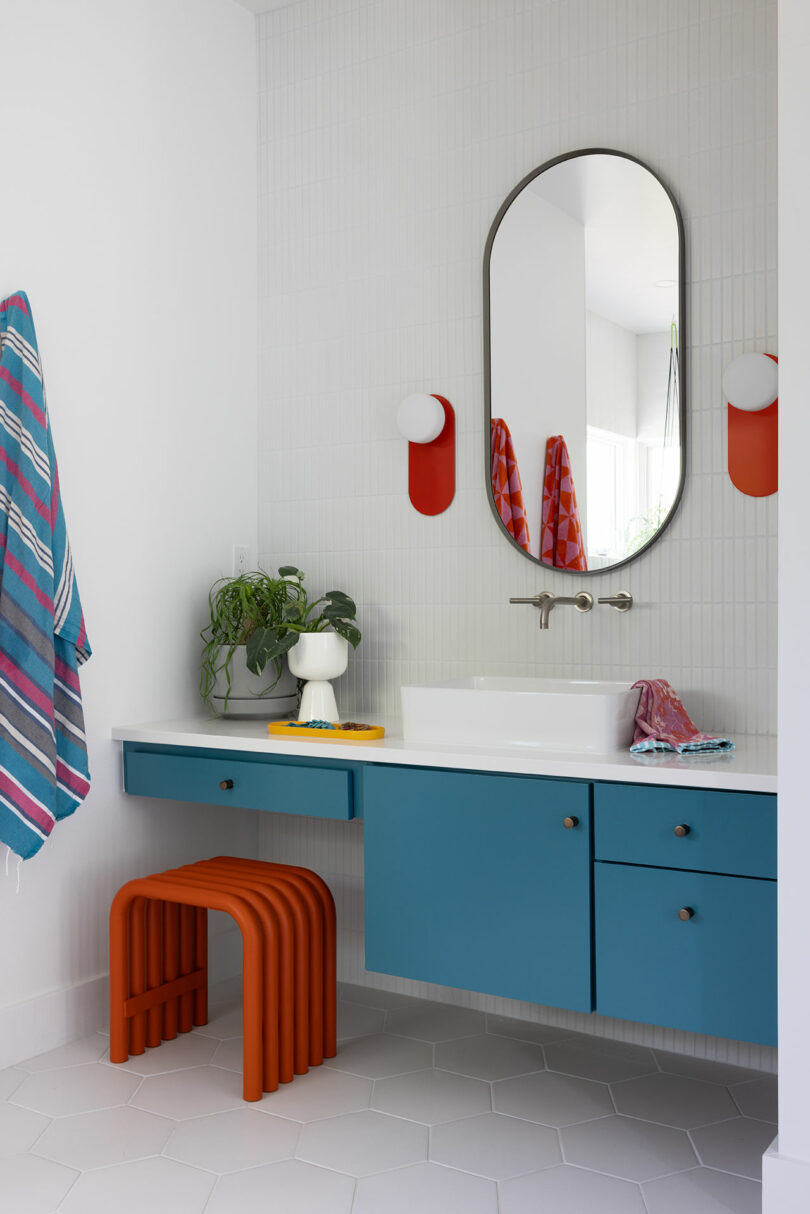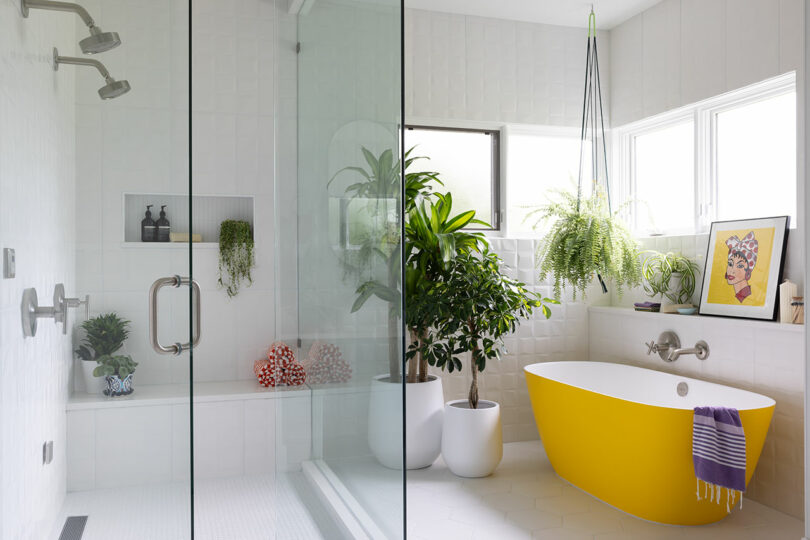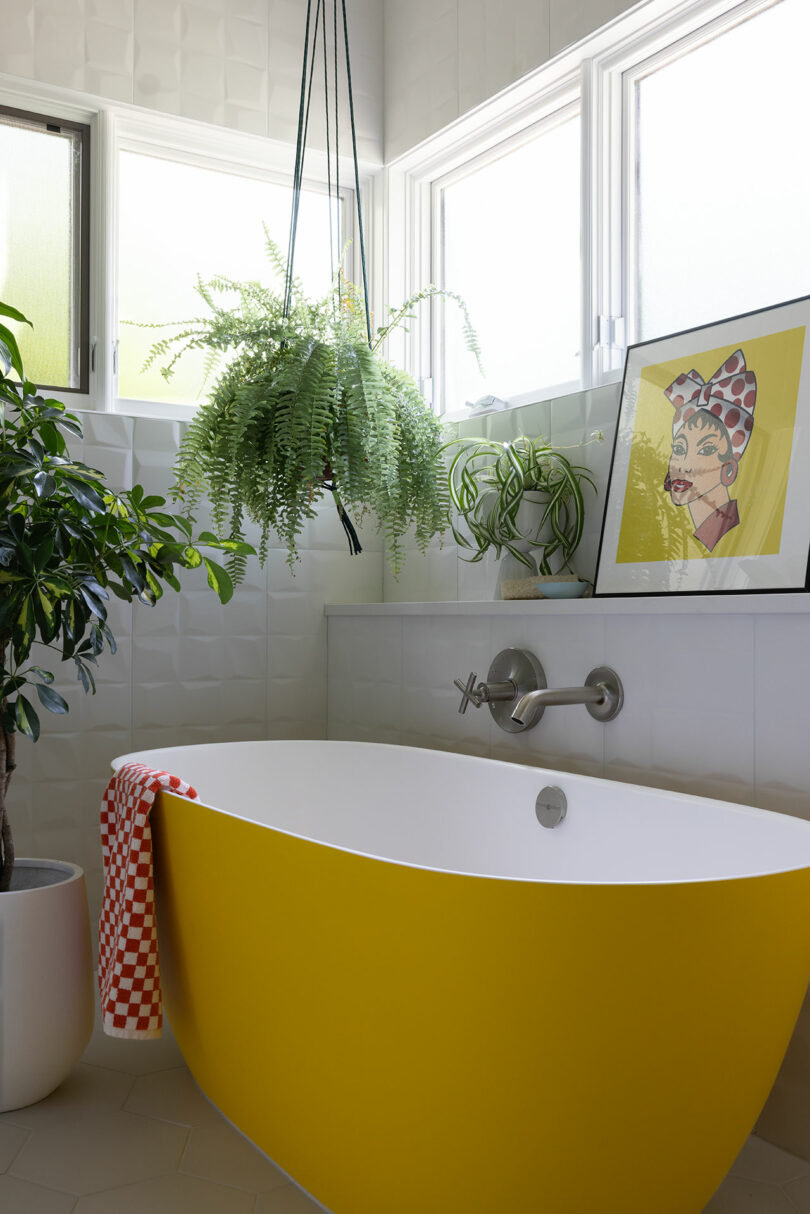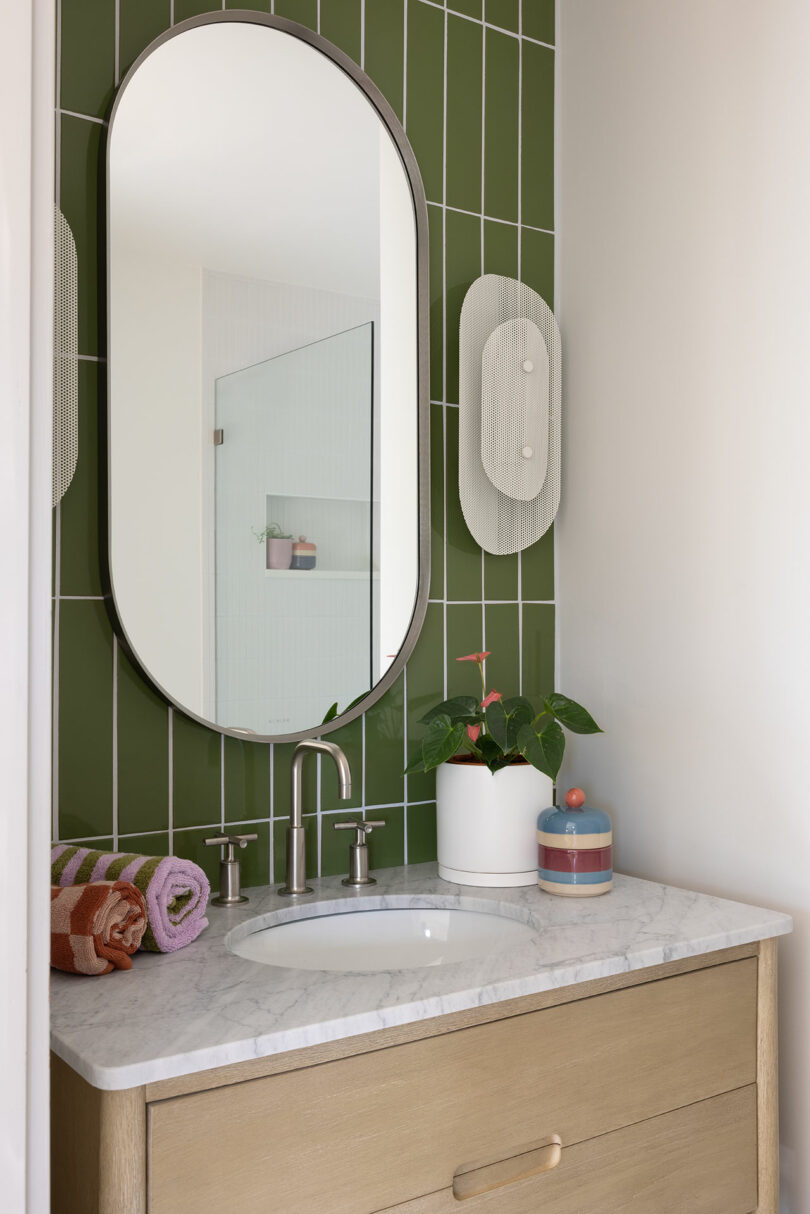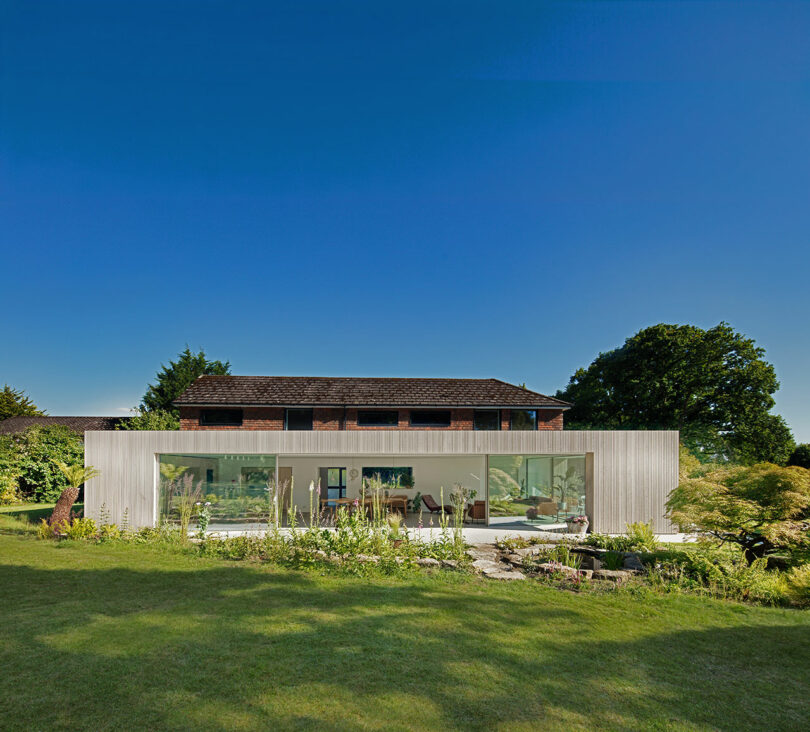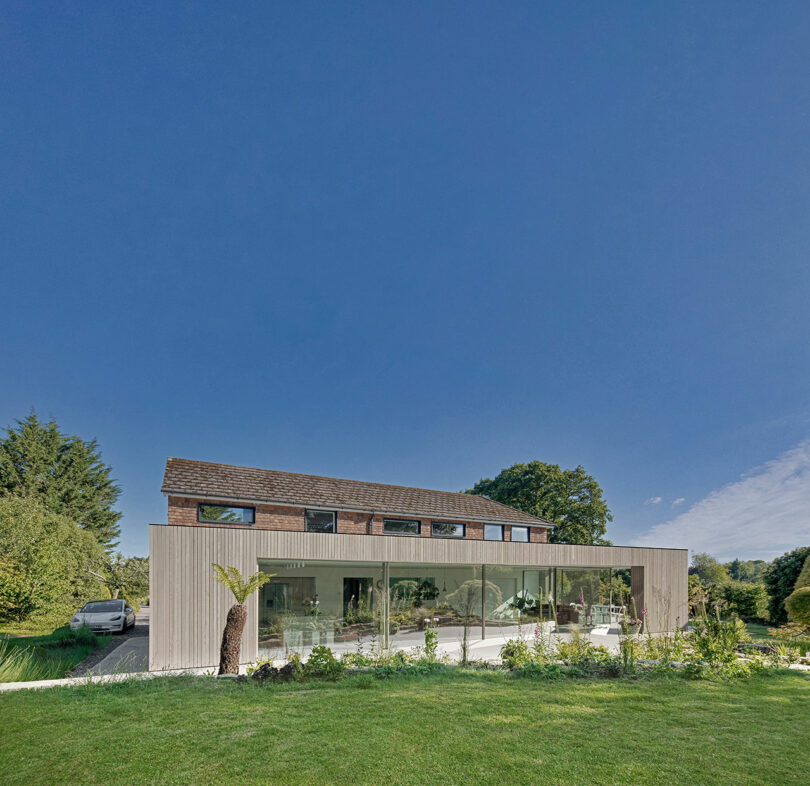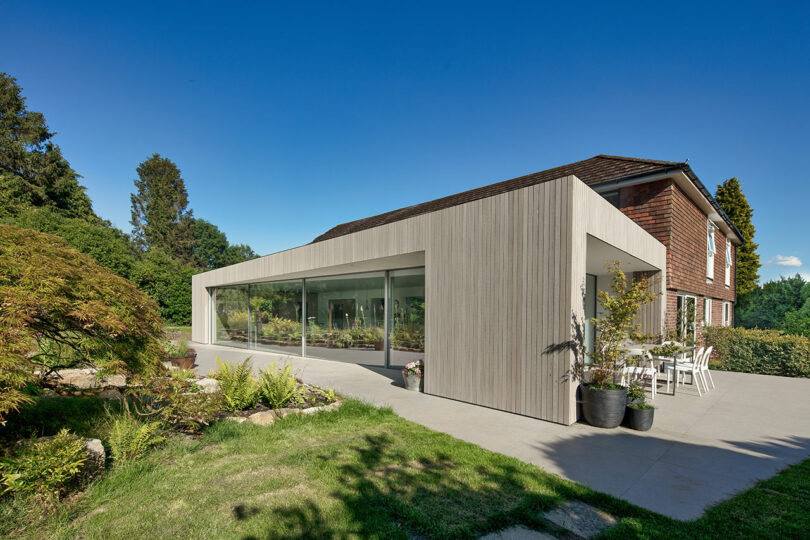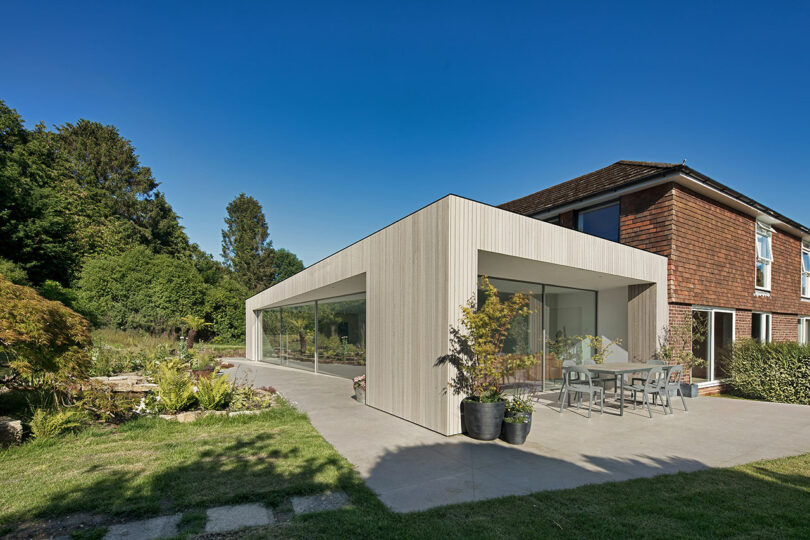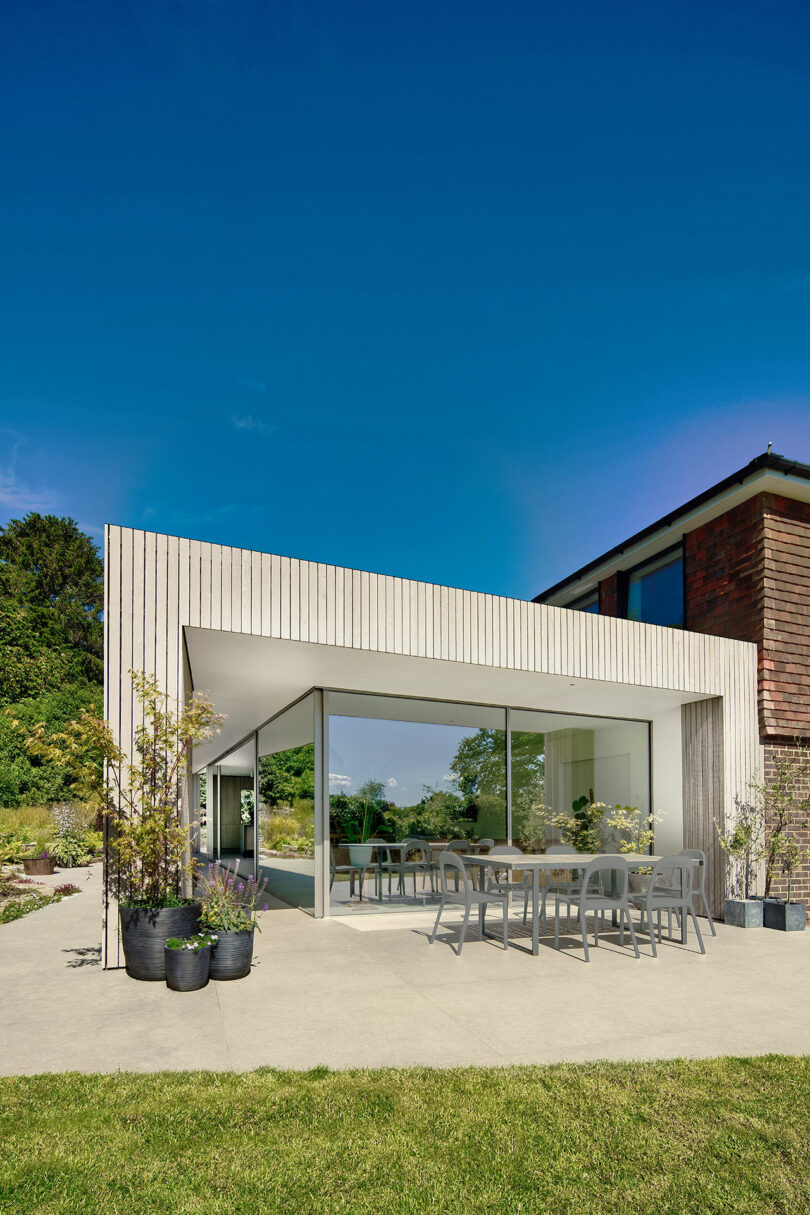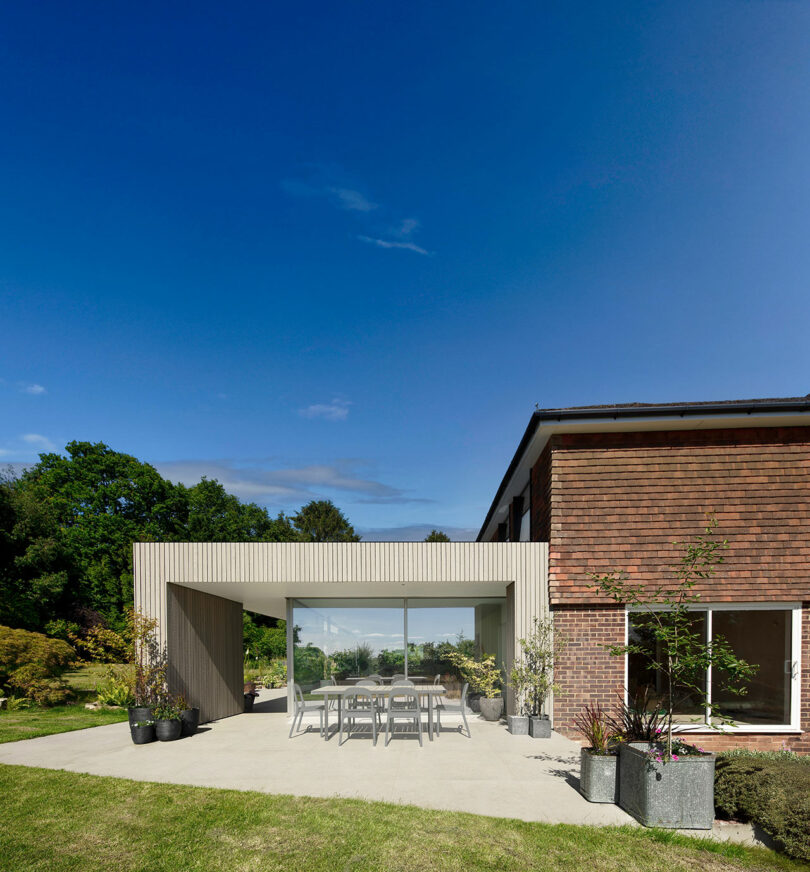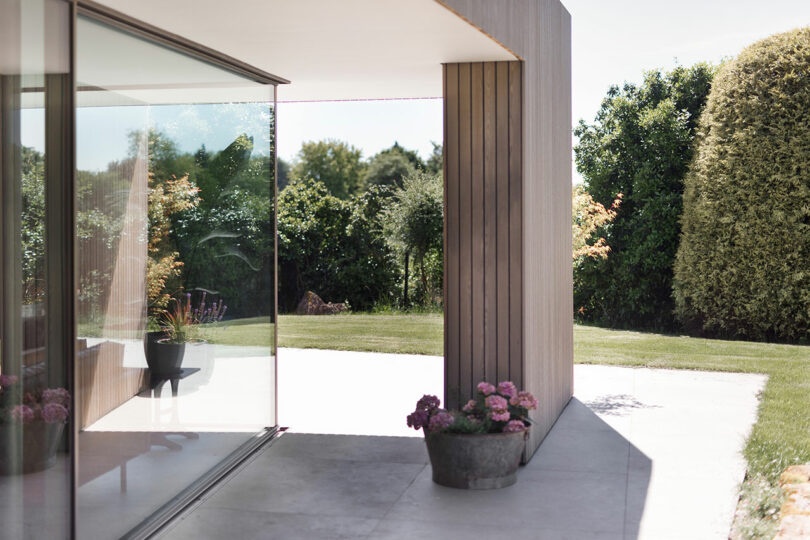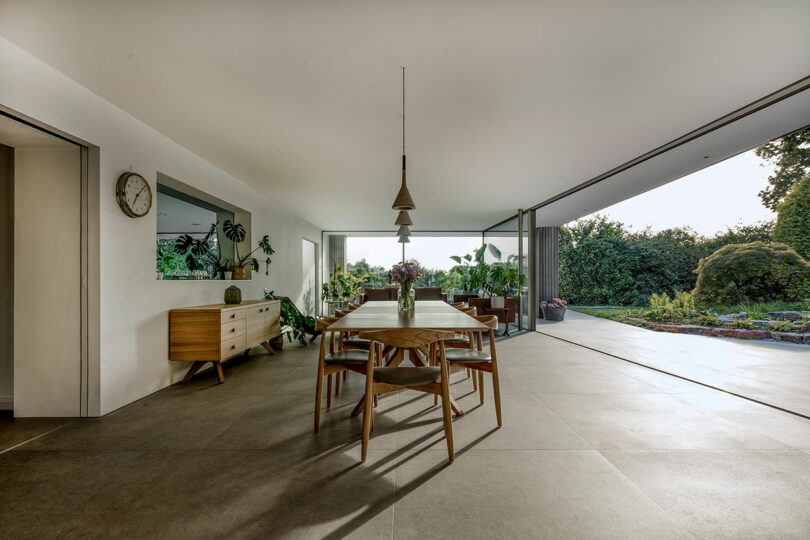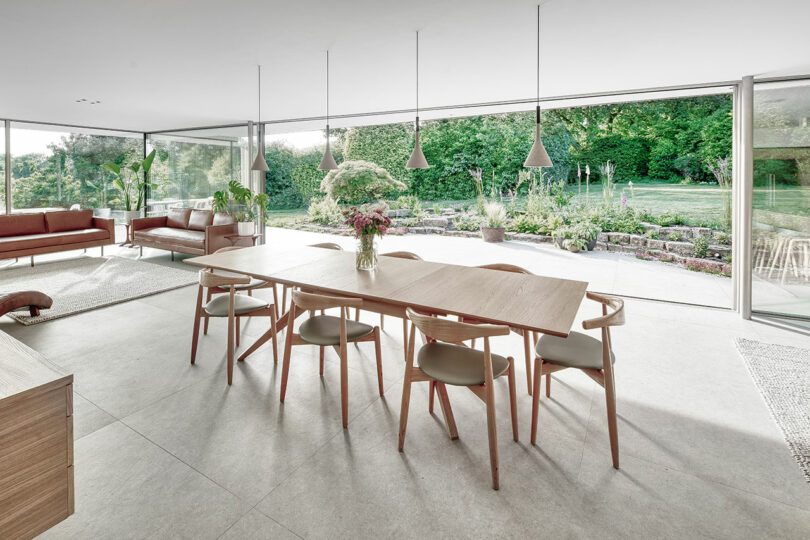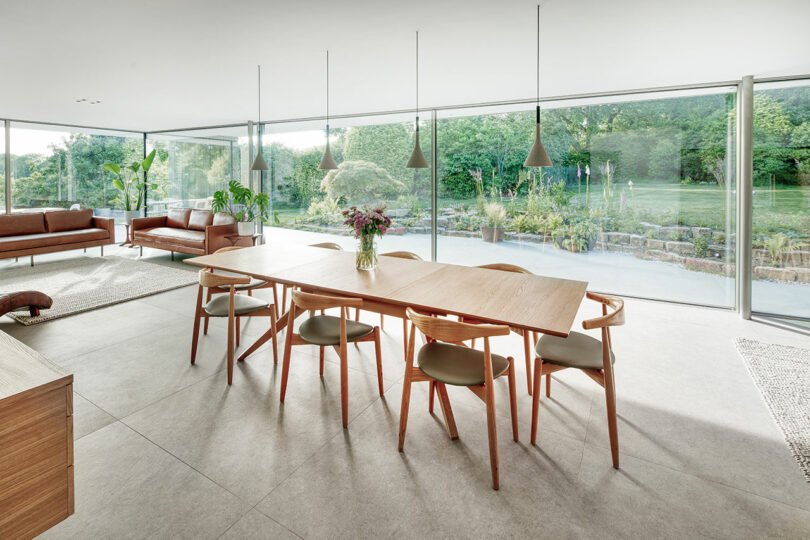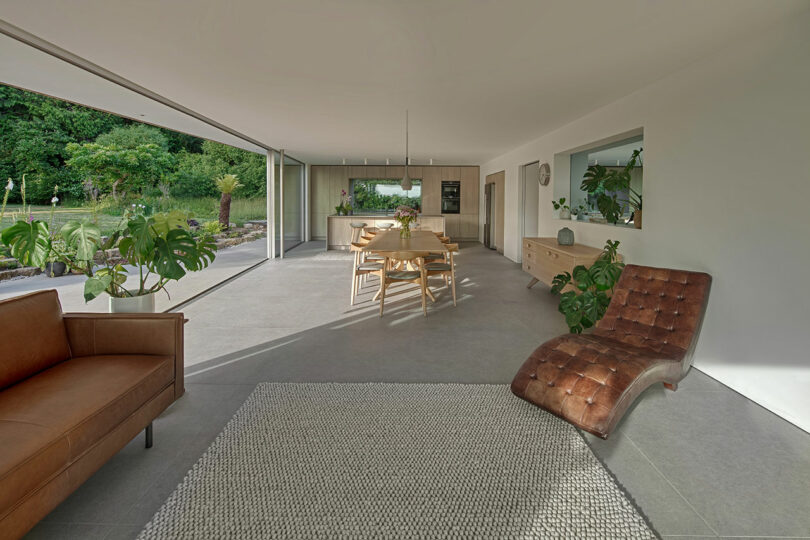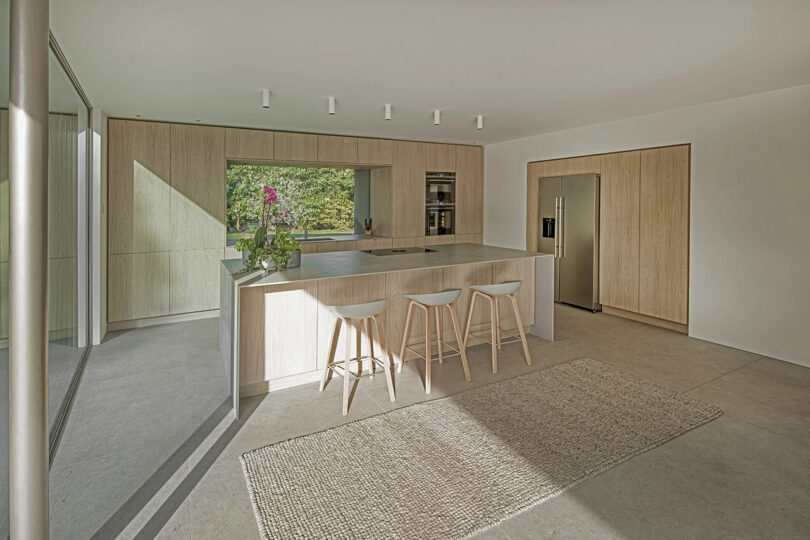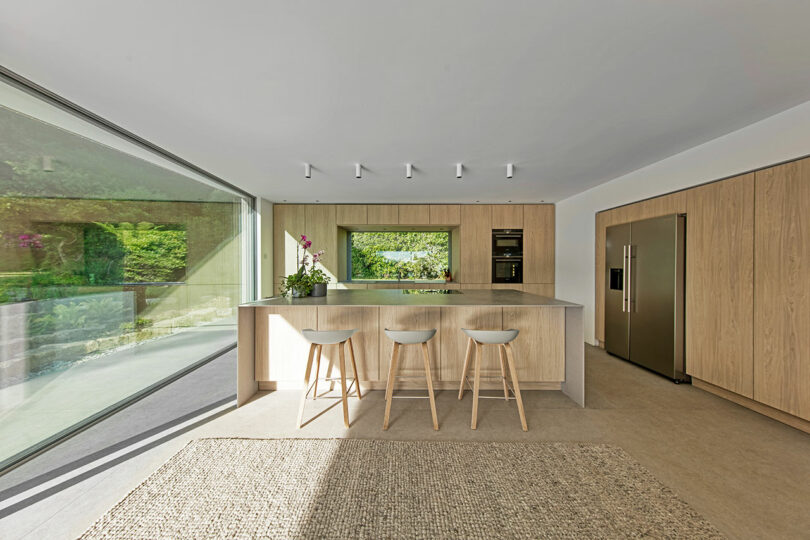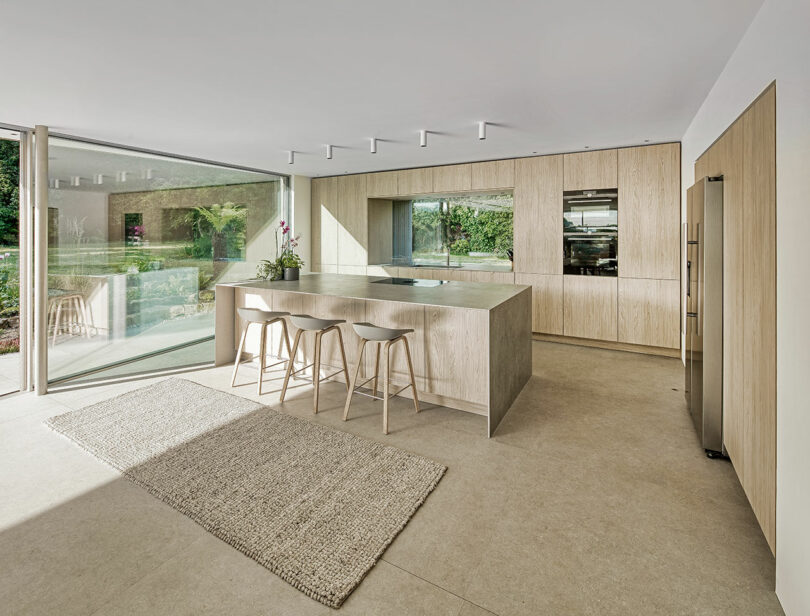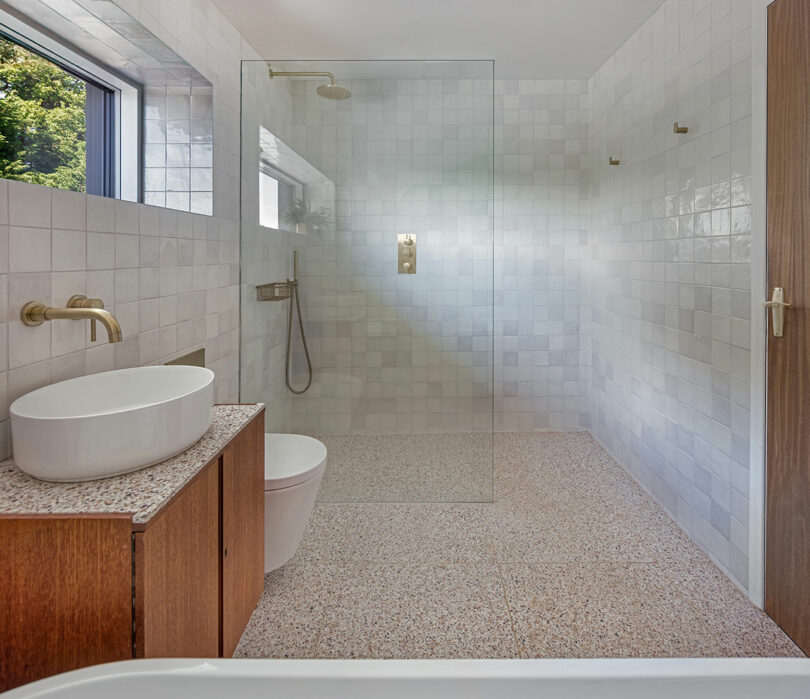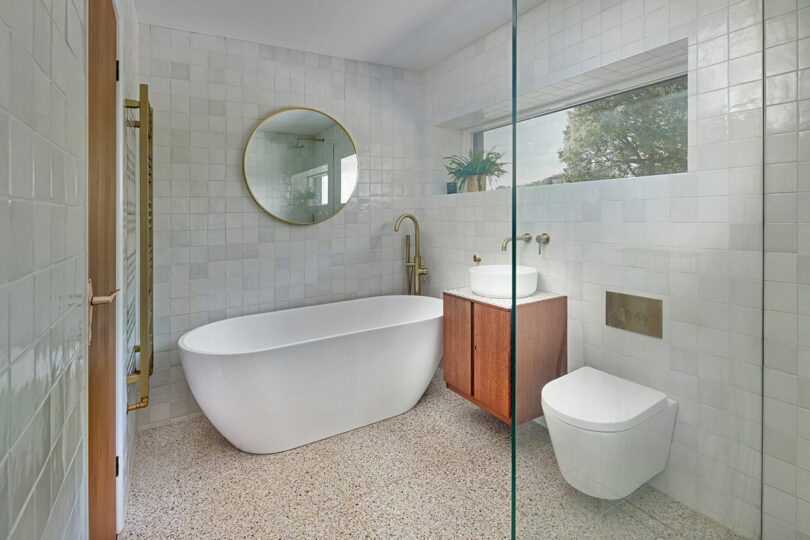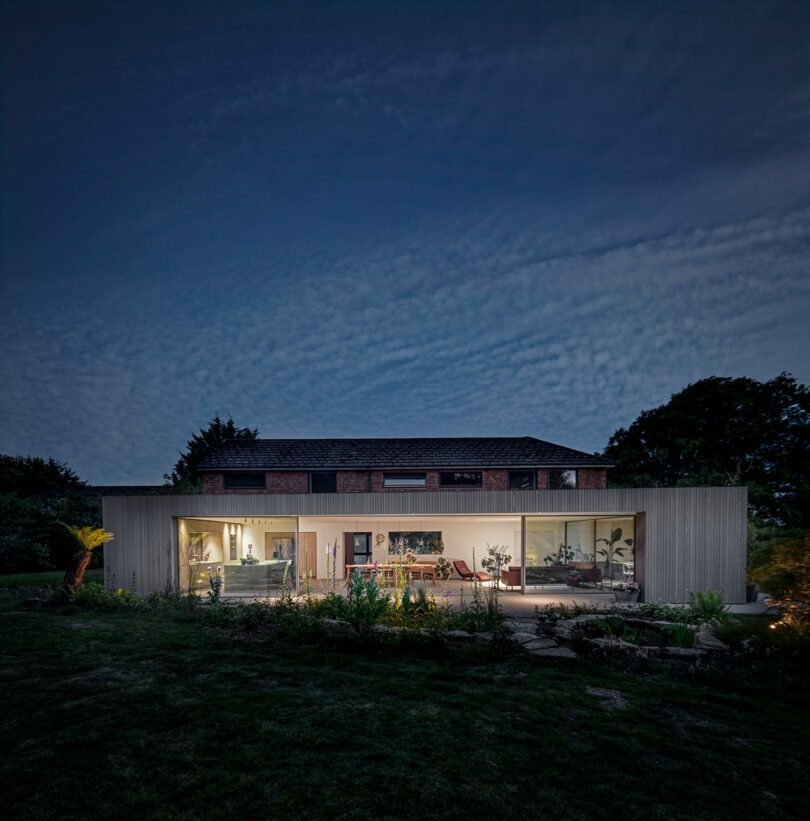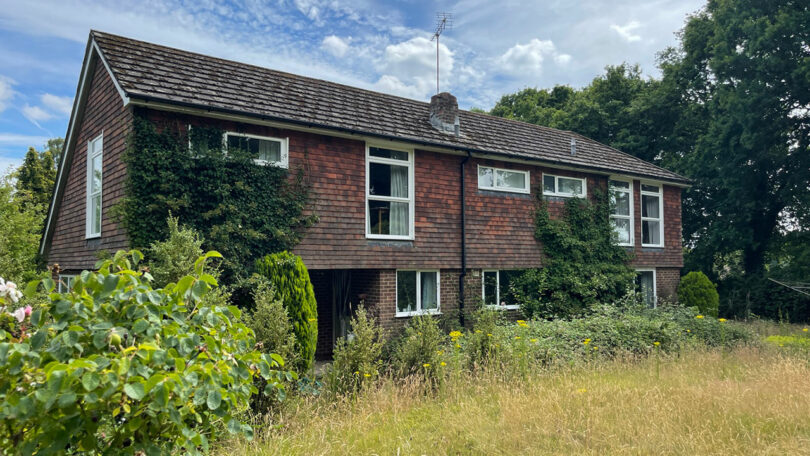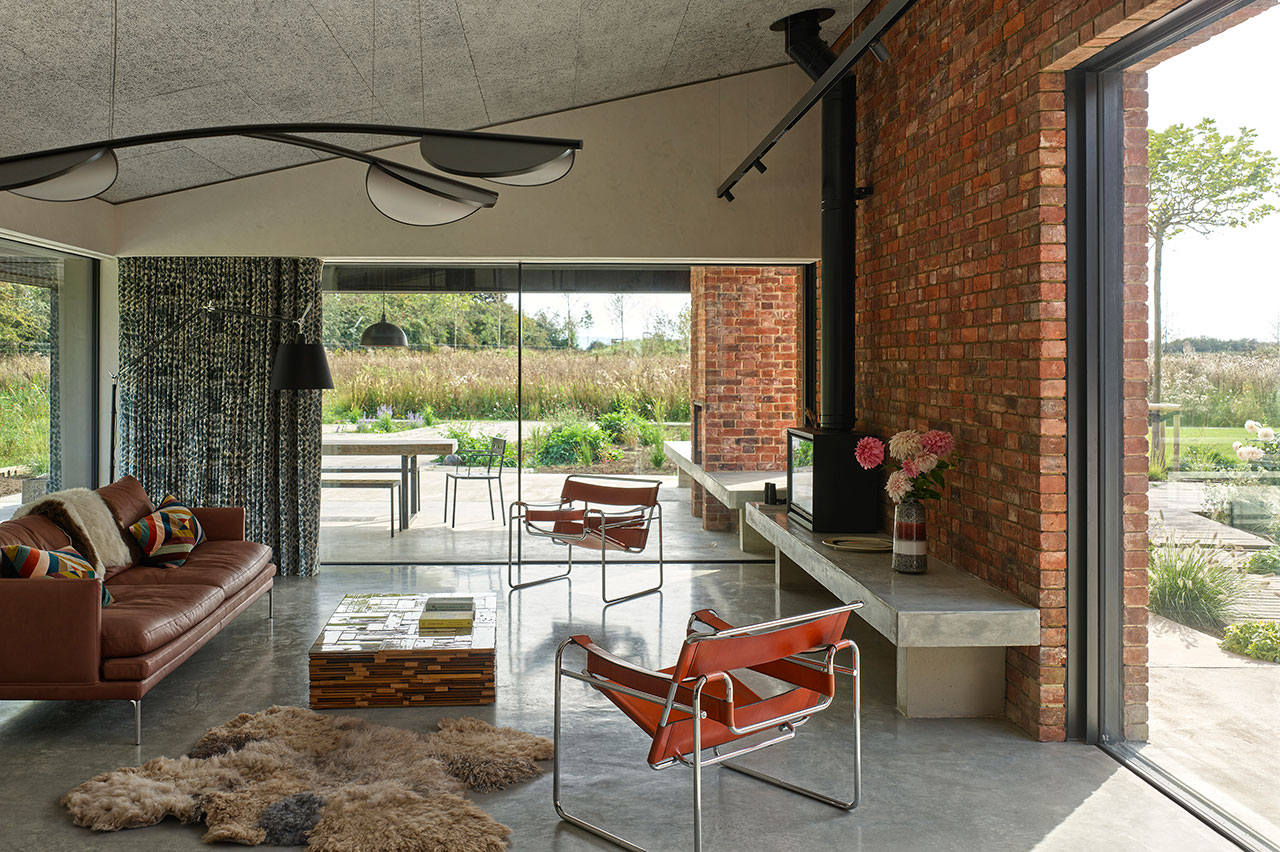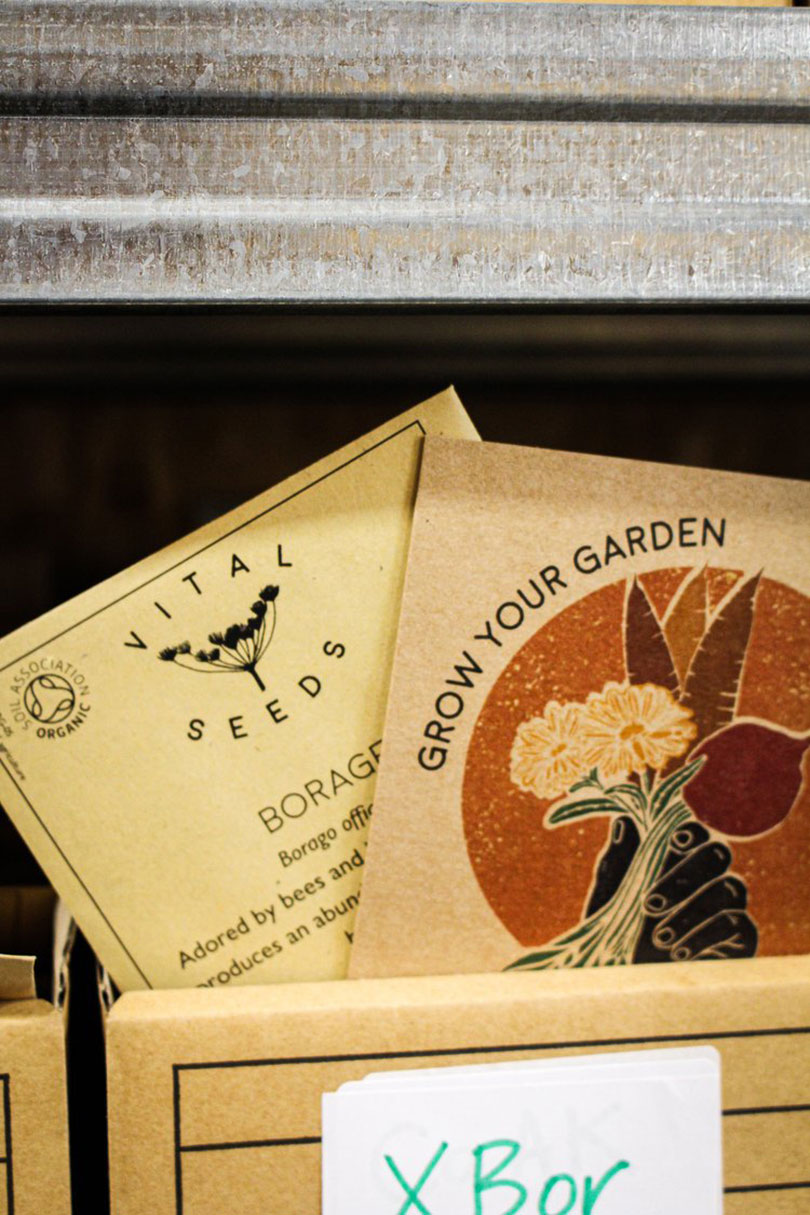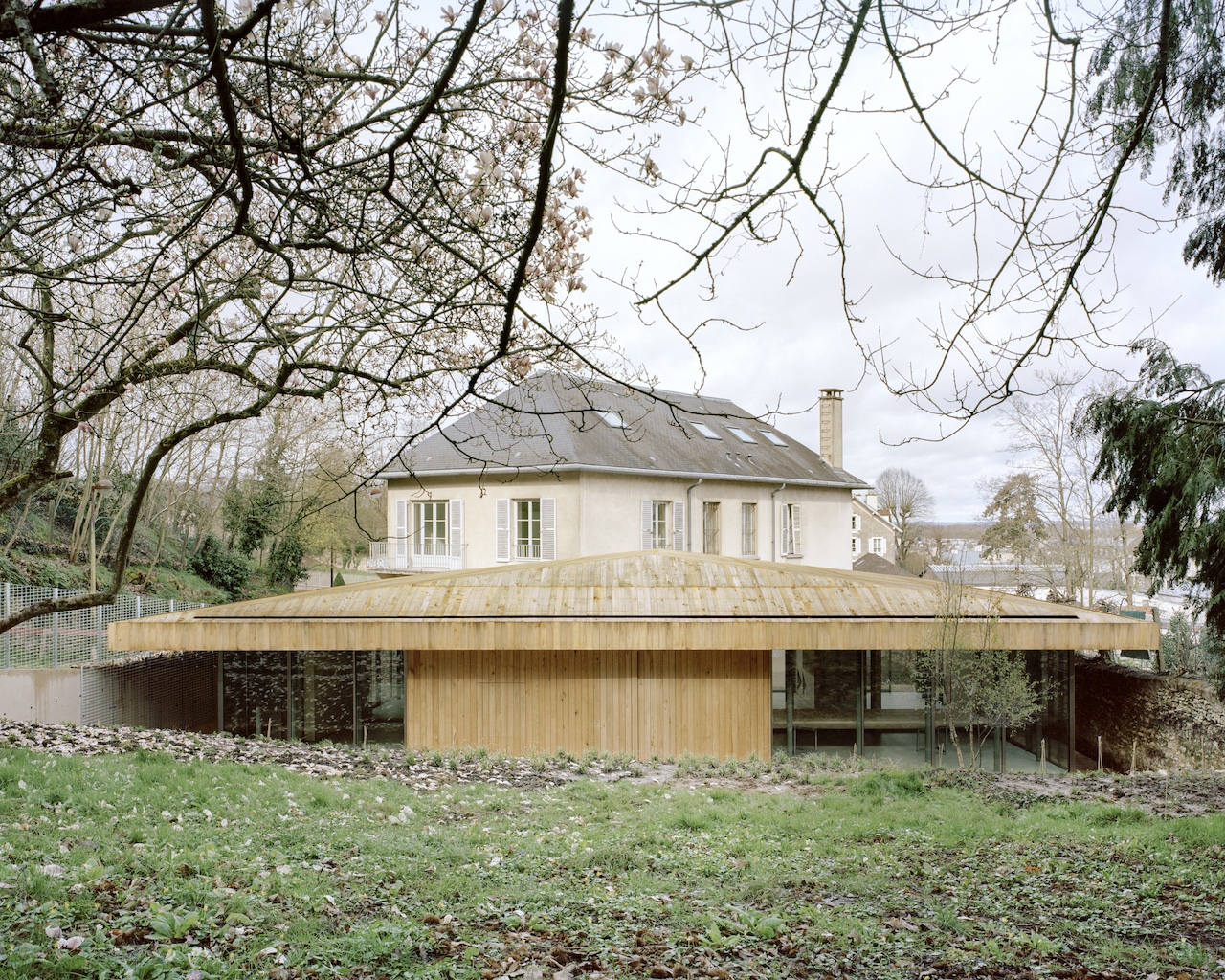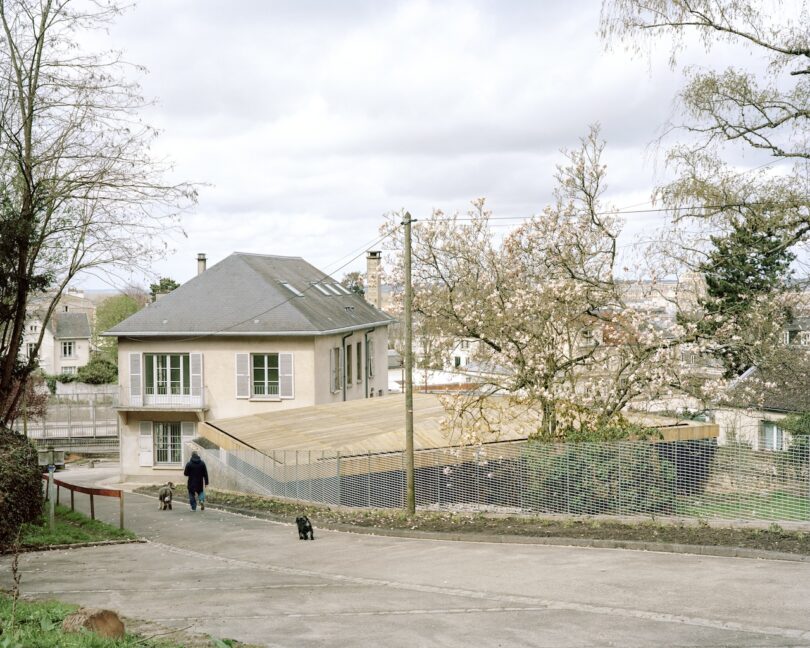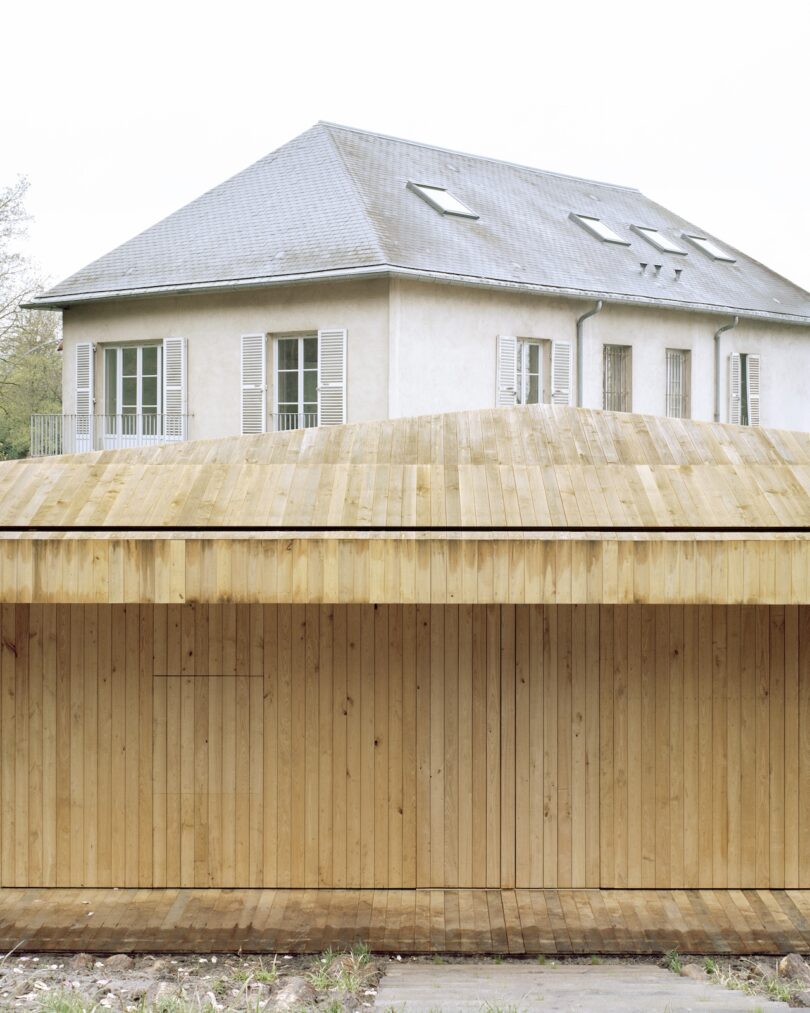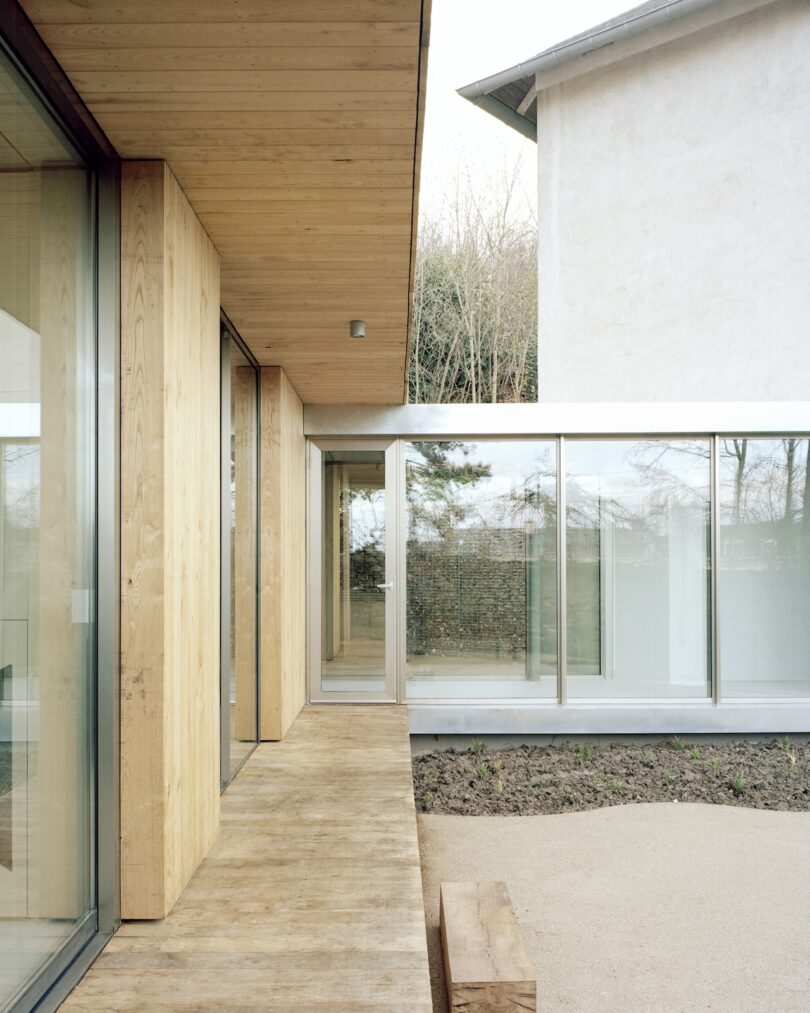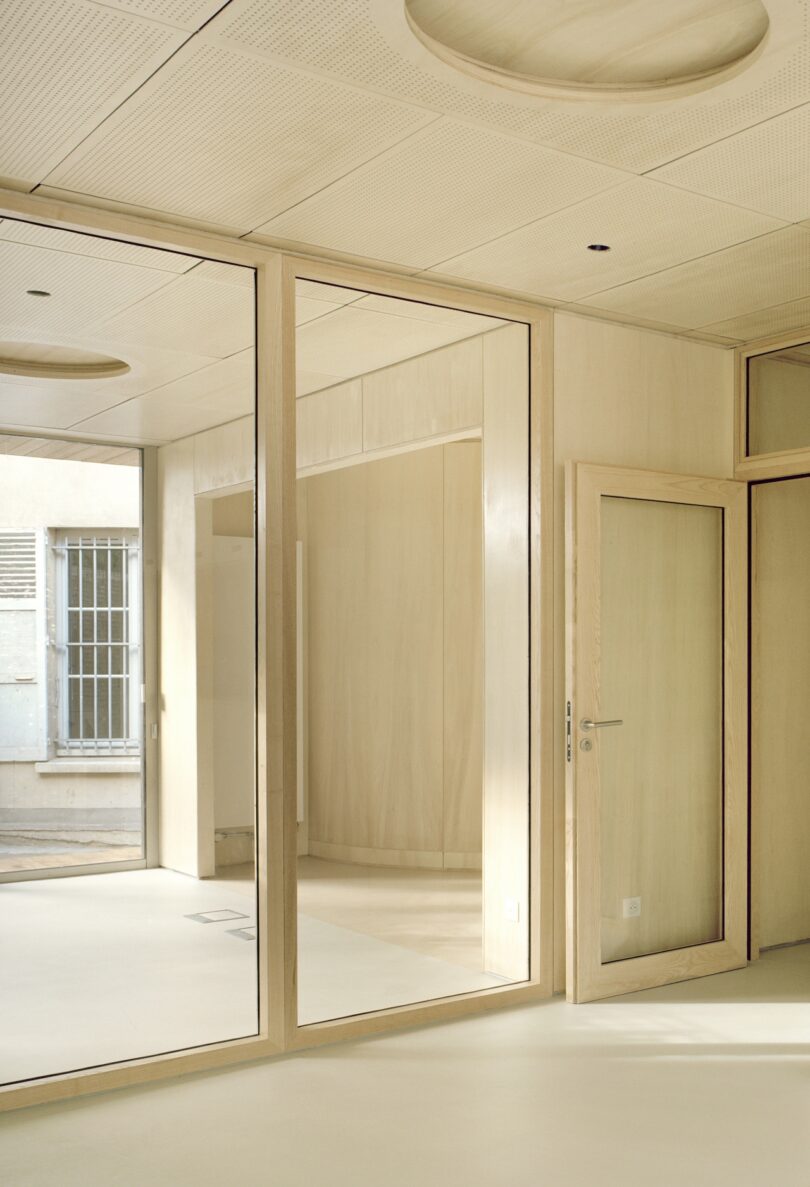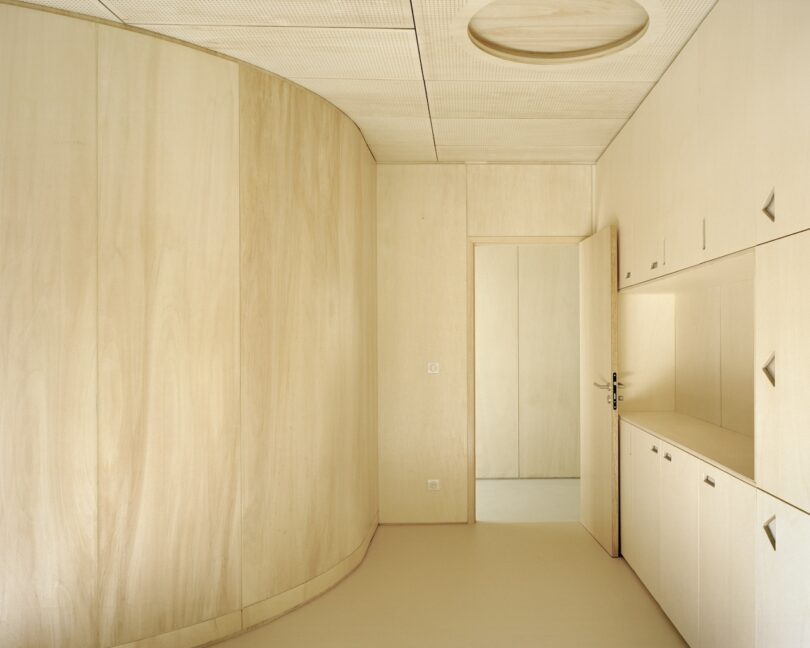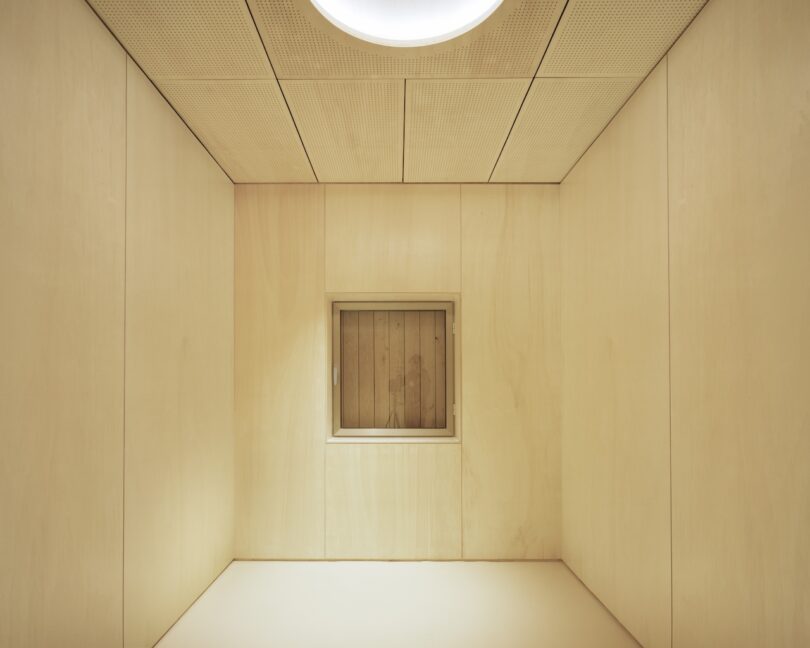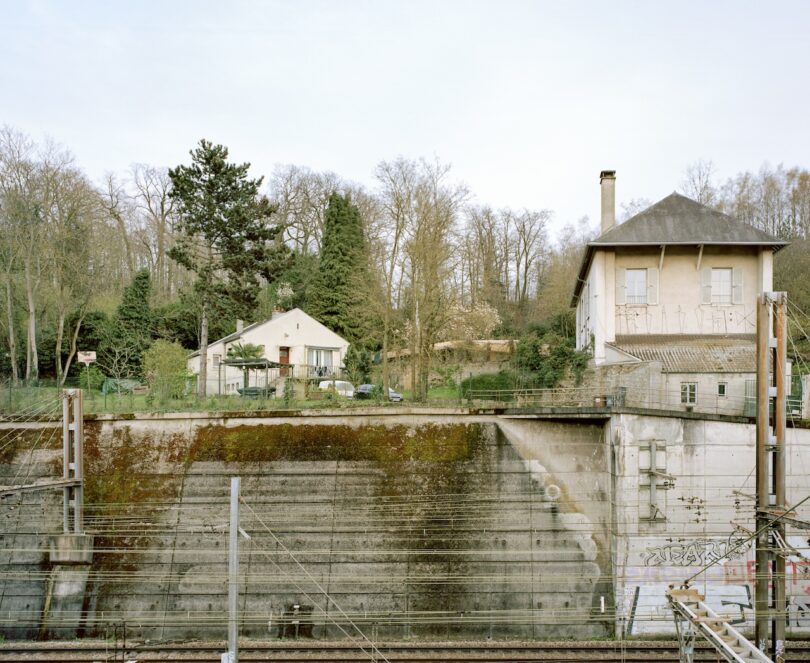Category: Architecture
Casa Polly Is a Playful Fusion of Brutalism and Pop Art in Rome
[ad_1]
In the historic quarters of Rome’s Villa Fiorelli, where the architectural language speaks of bygone decades, Casa Polly emerges as a unique blend of brutalist austerity and pop exuberance. Spearheaded by 02A Studio, this innovative project transforms a 1960s apartment into a vibrant, family-friendly home that tells a story of contrasts and continuity.
Once the creative domain of designer Valerio Ciampicacigli, the apartment bore the hallmarks of mid-century brutalism – raw concrete, open spaces, and an uncompromising focus on materiality. Today, 02A Studio architects Marco Rulli and Thomas Grossi reinterpret these features, infusing them with the lively palette and whimsical forms of pop art. The result is a home that dances between the stark and the playful, the rigid and the fluid.
According to Rulli, the aim was to “celebrate the home’s rich heritage while infusing it with the quirky, joyful aesthetic of its new owners, actress Martina Pinto and director Alessandro Poggi.” The project preserves the apartment’s robust character, yet softens its edges, creating an environment that is as functional as it is expressive.
Spanning 1,292 square feet, Casa Polly’s layout was thoughtfully reimagined to cater to the evolving needs of its occupants. The centerpiece of the home is an open-plan living area, defined by its eclectic mix of materials. Here, an exposed concrete pillar takes center stage, grounding the space with brutalist integrity. Surrounding it, a terrazzo floor shows through a delicate resin finish, while glossy tiles in the kitchen and wooden accents on a raised dining platform offer softer counterpoints.
Each room introduces a new layer of personality. In the hallway, lilac stripes cloak hidden storage, transforming utility into art. Meanwhile, the primary bedroom embraces a cartoonish charm, with flowing lines, plush furnishings, and a dreamy light blue carpet. The ensuite bathroom further explores this theme, where pastel tones and undulating forms meet sleek, industrial partitions. “This project embodies a perfect fusion of two worlds,” says Marco Rulli, co-founder of the studio with Thomas Grossi. “I love homes with a story to tell, and this one – with its layered patterns and eccentric furnishings – brings together different identities in a way that feels both unexpected and harmonious.”
The bathroom’s doorway is framed with a light green wavy border that leads into the light pink tiled space. A matching pink fluted vanity with a countertop wrapped in the same green as the doorway becomes the focal point seen from the bedroom. A contrasting pale yellow mirror introduces an unexpected new color that’s a welcome addition.
Though visually striking, Casa Polly is designed with family life at its core. The reconfiguration includes a child’s bedroom, a walk-in closet, and a dedicated laundry area – all integrated into the home’s playful aesthetic. Every corner of the apartment speaks to a careful balance between form and function, ensuring it remains both practical and delightful.
At the heart of Casa Polly’s transformation lies 02A Studio’s commitment to crafting homes that resonate deeply with their inhabitants. Founded a decade ago, the studio approaches each project as an intricate puzzle, where client aspirations, architectural constraints, and artistic vision converge. For Rulli and Grossi, architecture is more than the sum of its parts; it’s a medium for storytelling and a means to foster joy.
For more information on 02A Studio, visit o2a.it.
Photography by Giulia Natalia Comito.
[ad_2]
Source link
Japanese Architecture Meets Champagne at Maison Ruinart
[ad_1]
Like champagne itself, the revitalized Maison Ruinart in Reims, France emanates a sense of lightness and effervescence. After two years of meticulous restoration, this historic address, deeply rooted in the winemaking tradition of Champagne, has been reborn with a fresh, modern vision – one that captures the very essence of champagne through architecture, design, and landscape. Led by a renowned team consisting of Japanese architect Sou Fujimoto, landscape designer Christophe Gautrand, and interior architect Gwenaël Nicolas, the collaborative design includes a new pavilion of stone and glass, nestled within a public sculpture garden that champions local biodiversity.
Fujimoto’s design draws inspiration from the lightness of champagne bubbles, forming an airy, asymmetrical structure with sweeping curves that echo the roundness of a champagne glass. Fujimoto goes on to say, “Through the pavilion’s bay window, facing the main courtyard, you see Maison Ruinart as if in a dream.” The pavilion’s transparent wall opens to the main courtyard, allowing visitors to view both the historic surroundings and the landscape beyond in one fluid scene. Inside, visitors experience a blend of light and shadow, moving through connected spaces that reflect the limestone-rich landscape of the region. With its winding paths and expansive glass, the pavilion offers a sensory journey that emphasizes the subtle beauty of nature.
The interiors blend textures and hues in a nod to Ruinart’s chardonnay vineyards, with details like green-toned upholstery and oak and beech furnishings that evoke petal-like forms. Floating glass bubbles by Atelier Barrois decorate the bar, adding to the dreamlike atmosphere. An intimate cellar beneath the pavilion offers a secluded tasting experience for enthusiasts, featuring Ruinart’s rarest vintages. “I wanted to strike the right balance between the history of an ageold Maison and a more contemporary perspective. Visitors are invited to plunge into the world of Ruinart, feeling both guided and free to explore as they please,” says interior architect Gwenaël Nicolas.
The restored site not only honors the heritage of Maison Ruinart but serves as a place for modern dialogue, welcoming artisans, artists, chefs, and visitors to engage in a shared celebration of culture, history, and the art of champagne.
Photography by Raul Cabrera.
[ad_2]
Source link
Amy Pigliacampo Transforms a Colorado House Into Colorful Home
[ad_1]
Amy Pigliacampo’s recent renovation of a 3,713-square-foot home in Durango, Colorado showcases her ability to blend client preferences with innovative design approaches. This four-bedroom, four-bathroom residence underwent a complete transformation, with Pigliacampo overseeing changes to nearly every aspect of the home while retaining key elements of its original structure. The client, who is originally from Venezuelan, sought a fresh aesthetic for the home – one that integrated vibrant color, particularly yellow, while maintaining as much of the existing cabinetry as possible.
The original house had a muted “50 shades of brown” color palette, which Pigliacampo dramatically altered. Her goal was to retain 70% of the millwork, reducing waste, while giving the space a bright and modern update. Nowhere was this transformation more evident than in the kitchen and mudroom, which became Pigliacampo’s favorite parts of the project. These spaces saw the inclusion of a dedicated bar area, a coffee station, and a family-friendly mudroom, all while infusing bold color choices that brought the rooms to life.
Yellow, requested by the client’s eldest child, Vincent, became a key inspiration throughout the design (check out the yellow bathtub below!). The challenge lay in using this vivid color without overpowering the overall palette, and Pigliacampo’s approach succeeded in bringing in warmth and energy, while keeping the design cohesive.
The project also embraced practical, cost-effective strategies, such as refinishing the original hardwood floors with a sheer white stain to neutralize their yellow tone and updating the carpeted bedrooms with matching wood flooring. Pigliacampo and her contractor repurposed cabinetry in the kitchen, playroom, mudroom, and primary bedroom, saving on material costs while preserving quality.
Despite Pigliacampo’s physical distance from the project, with her being up to 17 hours away at times, the renovation was completed with impressive craftsmanship thanks to a dedicated contractor and collaborative tradespeople. Some of the design elements were new to the team, including the use of tambour and concrete skim materials, but these were executed successfully, adding unique textures and finishes to the home.
One of the more unexpected challenges in the project came from updating the home’s outdated technology. The existing lighting and sound system, state-of-the-art when installed in 2007, required a substantial investment to integrate with the new fixtures and design changes. This experience left Pigliacampo with a cautionary lesson about the risks of embedding too much technology in a home’s infrastructure, which can quickly become obsolete.
The finished home now reflects a blend of the client’s love for bold colors and Pigliacampo’s clever design ideas. The use of Schoolhouse Electric and Dutton Brown lighting, Fireclay and Florida tiles, and custom furniture pieces like the striking Vitra chair in the living room, all contribute to the home’s modern yet personalized feel. Ultimately, this project exemplifies how thoughtful collaboration and creative reuse of materials can result in a home that feels both fresh and familiar.
For more on Amy Pigliacampo, visit amypigliacampo.com.
Photography by Amy Pigliacampo and Corey Szopinski.
[ad_2]
Source link
An Interim Landscape at NC State University Is a Masterclass in Reuse – Landscape Architecture Magazine
[ad_1]
An Interim Landscape at NC State University Is a Masterclass in Reuse Landscape Architecture Magazine
[ad_2]
Source link
A Modern Extension Expands a Mid-Century House in Winchester
[ad_1]
AR Design Studio has brought new life to a mid-century home in Winchester, United Kingdom, creating a seamless blend of the original 1970s design with a fresh contemporary extension. Known as The Seventies House, this project involved both restoring the house and garden, which had fallen into neglect, and adding a 1,012-square-foot addition designed to celebrate the lush landscape that surrounds the property.
Originally, the home’s garden was a defining feature, developed by the previous owner, a local horticulturalist, and brimming with mature trees and dense shrubs. However, years of neglect had left it overgrown. AR Design Studio was tasked with rejuvenating the garden, trimming back the foliage and reintroducing new plantings, while relocating elements like the home’s original 70s rockery, or rock garden, to make room for the new extension.
The architectural intervention on the house itself introduces a striking contrast. While the original structure showcases the vibrant colors and furniture typical of mid-century design, the extension presents a clean, minimalist approach. A long, asymmetric form stretches along the northern side of the house, with an elegant wooden canopy extending to the west. This overhang not only adds architectural interest but also provides shade and protection from the elements.
Inside, the extension prioritizes openness and flexibility. The new space features an expansive kitchen, living, and dining area, making it ideal for both everyday family life and hosting larger gatherings. The use of sliding glass walls creates a strong connection between the interior and the garden, flooding the space with natural light and enhancing the sense of openness.
The minimalist interior design allows the garden to take center stage. A neutral palette and sleek, clean lines give the space a calming, contemporary feel. White pocket doors allow flexible partitioning between the kitchen and living areas, offering privacy when needed but opening the house up to light during the day. The furnishings pay homage to the home’s original mid-century character, creating a balance between old and new.
A light wood is used throughout the kitchen, offering a textured and warm contrast to the large gray tiles on the floor. The tiles extend out to the wraparound patio further enhancing the seamless indoor/outdoor connection. Even in the bathrooms, the mid-century spirit persists, with modern interpretations of the bold colors and design elements that defined the era. Overall, the The Seventies House transformation carefully maintains its mid-century charm while offering a new, spacious environment that draws the beauty of the garden indoors.
Original house:
For more projects from AR Design Studio, visit ardesignstudio.co.uk.
Photography by Martin Gardner.
[ad_2]
Source link
Richard Parr on His Favorite Bag, Inspiring Art + More
[ad_1]
It was clear that Richard Parr was destined to be an architect, putting his visions to paper early on. In elementary school, the left side of his English lesson book was filled with his stories – and a low mark for his less than stellar spelling. On the right side, however, were meticulous drawings of structures, just one example of his love of the built environment. “I drew buildings everywhere, and made them out of LEGO and clay,” Parr says. “I always enjoyed playing with and making spaces.”
His self-education included visits to places in Italy and England steeped in history. When Parr stepped into Basil Spence’s Coventry Cathedral, it was a seminal moment, and he still has the guidebook from that day. Completed in 1962, the new cathedral was built to replace the 14th-century St. Michael’s Cathedral, destroyed in an air raid during World War II. Spence took elements of the past to reinvent the future. For Parr, it represents what he constantly strives to achieve.
Richard Parr Photo: Mark Cocksedge
The architect founded Richard Parr Associates three decades ago, with an emphasis on timeless spaces, created by merging craft traditions and technology. He also appreciates hospitality, and can often be found cooking and entertaining. In the London studio, dubbed the People’s Space, there’s even a bar and a main kitchen. The staff regularly share meals and conversation because they consider breaking bread the ultimate act of giving.
Parr divides his time between two locations where his life and studios are. While he’s energized when working in the city, he disconnects as soon as he arrives at his farm in the Cotswolds. He takes every opportunity to enjoy nature and tend to his kitchen garden.
Parr regrets that he missed out on both A-level art and a foundation year, and he would like to explore different mediums, particularly painting. He’s content though, and like all exceptional leaders, he knows which role each person will thrive in, himself included. “I like to think that I have tapped into most of my usable talents, and seasoned enough to recognize where I am not going to flourish,” Parr notes. “Even within the practice, I am happy to delegate where others can do better than me.”
Today, Richard Parr joins us for Friday Five!

República Dominicana, Facultad de Ingeniería y Arquitectura (FIA), 2022, oil, beeswax, and powdered gold pigment on canvas
Rogelio Báez Vega, whose work I encountered in NADA in Miami in 2022. The pieces are depictions of modernist buildings. The modernist movement is an area of fascination and interest to me. The impact of the ‘International Style’ and its application across the world is a theme that I engaged with when discovering Rogelio’s work. I enjoy seeing the artist exploring the relationship this architecture has in different geographies and politics and I have several works in my collection from diverse areas of the world, exploring the societal dialogue with a built environment that has become universal. As with anything the universality becomes local and it’s the conversation in specific context that interests me.
Many years ago, I encountered the designer Massimo Alba from Milan. His annual collections are a treat and his approach to fashion… the fabrics, colors, texture and cut marries with my own love of comfortable and understated ‘sprezzatura.’ His mandarin collared jackets, which are as European as anything else have become the core of my wardrobe. They are more than they seem, with (like everything he designs) an understated quirkiness that combines the relaxed style of Italian tailoring with interesting and clever fabrics. I wear his linens in summer and his tweeds in winter, velvets, and cord as well. Every year I visit his Brera showroom and make an annual addition.

Photo: Courtesy of The Modern House
Pep and Cuca’s gallery embodies and combines everything I love. Firstly, the very existence of this gallery in Tetbury is a joy and 10 minutes’ drive from home. The combination of contemporary art, 20th century furniture, some extraordinary antiques from both Spain and the British Arts and Crafts movement means I could happily own most of what they have in the gallery! I spent many years living in Spain and the fusion of contemporary architecture with history is something I learnt there and why their choices resonate and works so well for me. Among a number of pieces I have acquired from them are works by Chillida, the Mallorcan artist Guillem Nadal, and a number of pieces of furniture. I bought an Eames coffee table from the 1940s, which is one of the most enjoyable pieces I own and used daily.
My Porter-Yoshida bag goes with me everywhere. It’s the perfect design and could have been tailored for me. I never lose anything into it yet I throw my life into it! It holds everything from my laptop to crayons and is a smart but relaxed non statement piece.
I have chosen something garden related. Gardening or my garden is my escape and where hours of time are expended. My kitchen garden at home fills what was once a concrete yard between my house and my studio. I can find something to eat in it on every day of the year. Spring time seed buying is a ritual and I discovered Vital seeds a few years ago. They sell organic seed and I have a great success rate with everything that I have bought from them.
Works by Richard Parr:
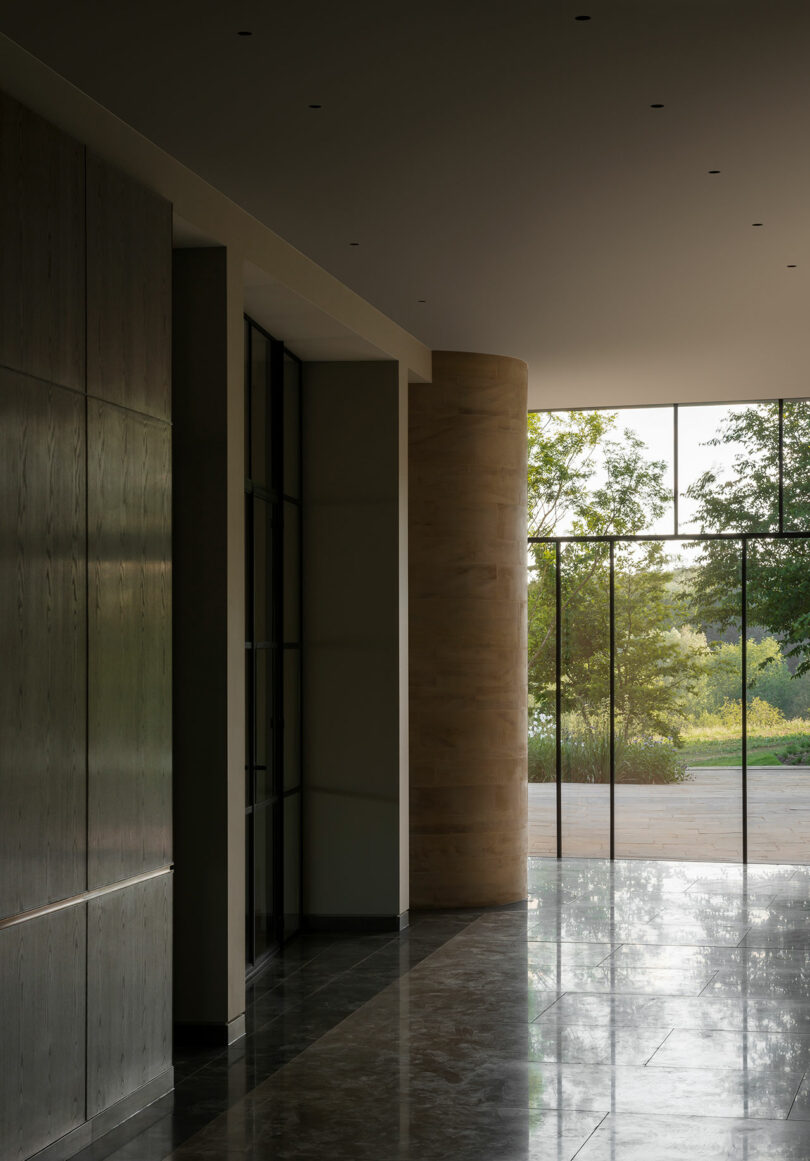
Photo: Gilbert McCarragher
[ad_2]
Source link
Office National des Forêts Blends Urban and Natural Settings
[ad_1]
Thoughtful architecture has the power to reflect and reinforce the natural or urban environment of which it exists. Design, materials, and spatial planning come together to create buildings that harmonize with the landscape rather than dominate it. Whether seen in small projects such as Fallingwater or an extension to a public structure such as the Oslo Opera House, there will always be opportunity for architectural integration. In the case of the Office National des Forêts, designed by Atelier Delalande Tabourin, in Versailles, the expansion takes this concept to new heights. Positioned near a railway and bordering forest, the building embraces its setting, seamlessly connecting the built and natural worlds.
The structure reflects the activities of the forestry office, with its form and materials carefully chosen to blend into the forest context. The space invites both employees and passersby to engage with the building in an immersive way, with each element designed to highlight the craftsmanship involved in forest management.
The roof and facade are constructed from locally sourced wood, specifically chestnut, which has been carefully processed to fit the project’s needs. The wood comes directly from the Versailles forest, and its preparation involved a meticulous timeline to accommodate the drying period required for the material.
Inside, the pavilion is organized clearly, with spaces defined by solid wood blocks, guiding movement through darkened corridors that contrast with the natural light flooding the office areas. Custom-designed furniture and signage, made from wood, further connect the space to the forest environment, referencing the markings traditionally used by foresters.
The pavilion’s recessed position, combined with an extended wooden canopy, helps protect the interior from summer heat, while bio-sourced insulation and natural ventilation eliminate the need for artificial cooling. In the winter, a biomass heating system ensures energy-efficient thermal comfort.
For more information on Atelier Delalande Tabourin, visit atelierdelalandetabourin.com.
Photography by Maxime Delvaux.
[ad_2]
Source link
Heatherwick Studio’s The Vessel Reopens at Hudson Yards – Parametric Architecture
[ad_1]
Heatherwick Studio’s The Vessel Reopens at Hudson Yards Parametric Architecture
[ad_2]
Source link

